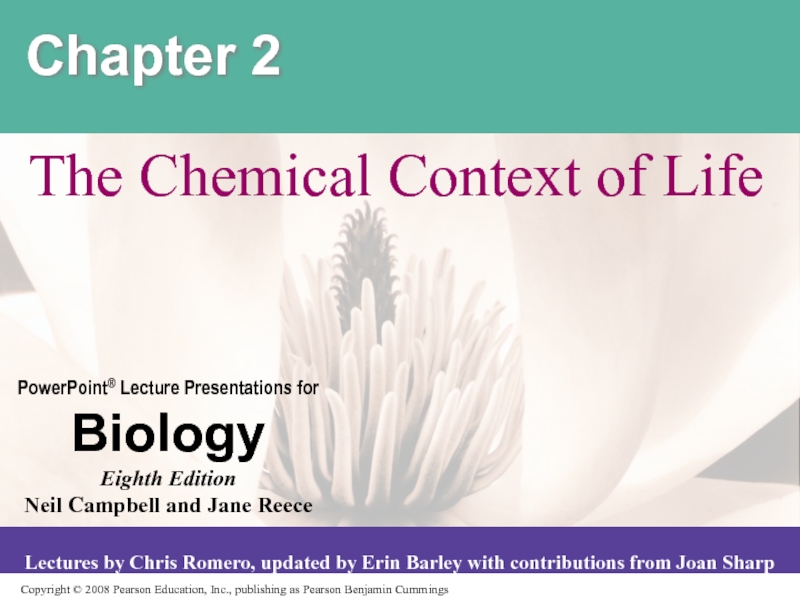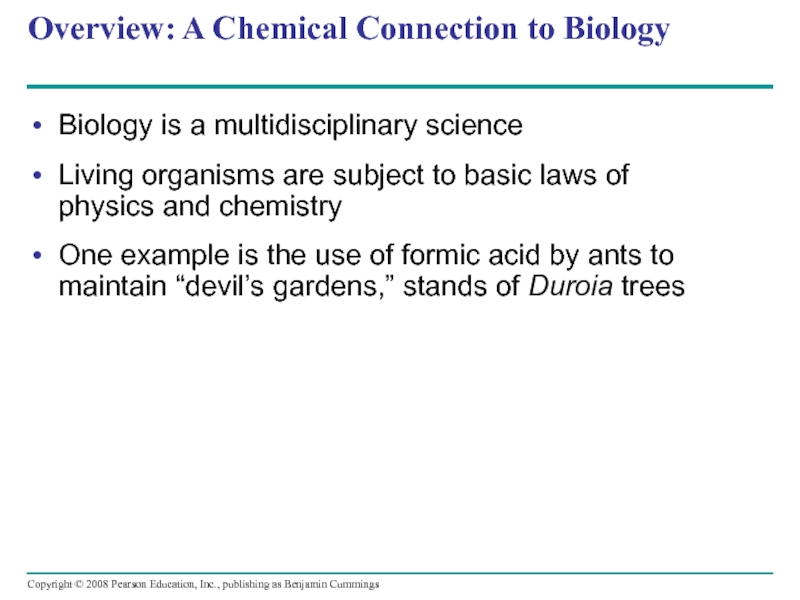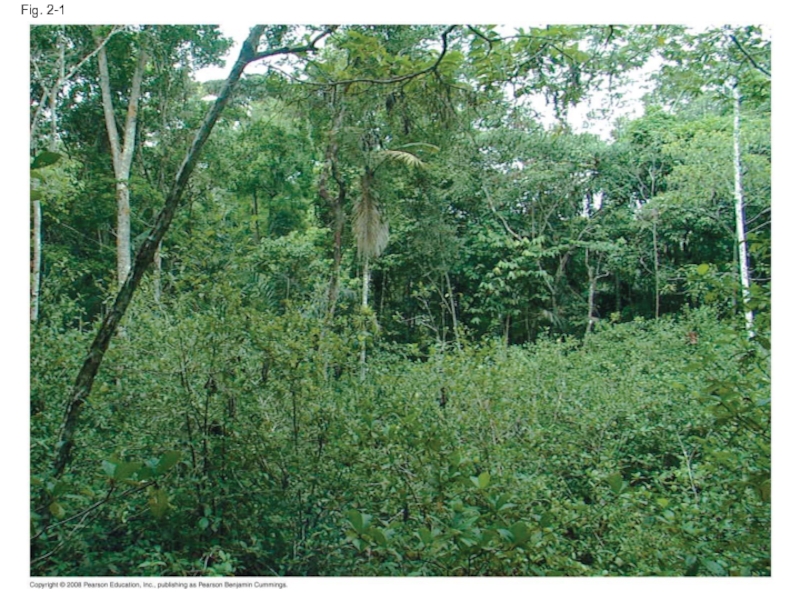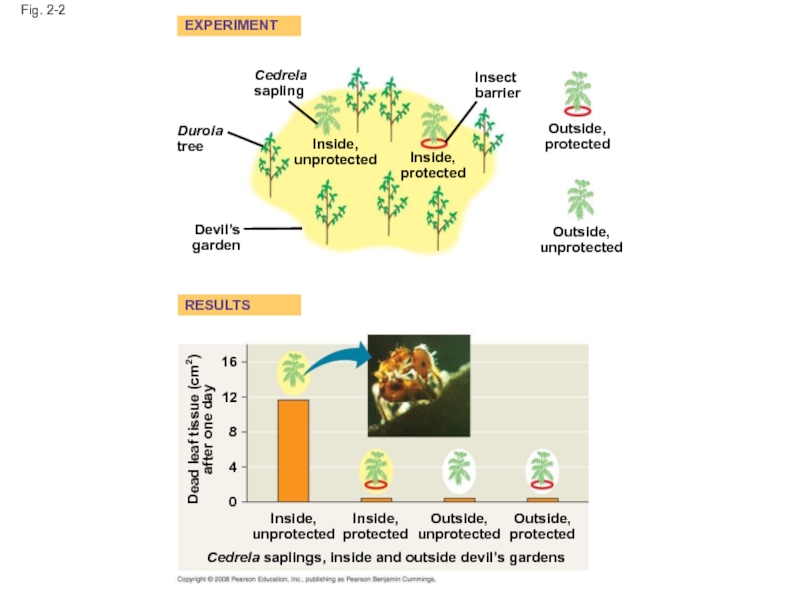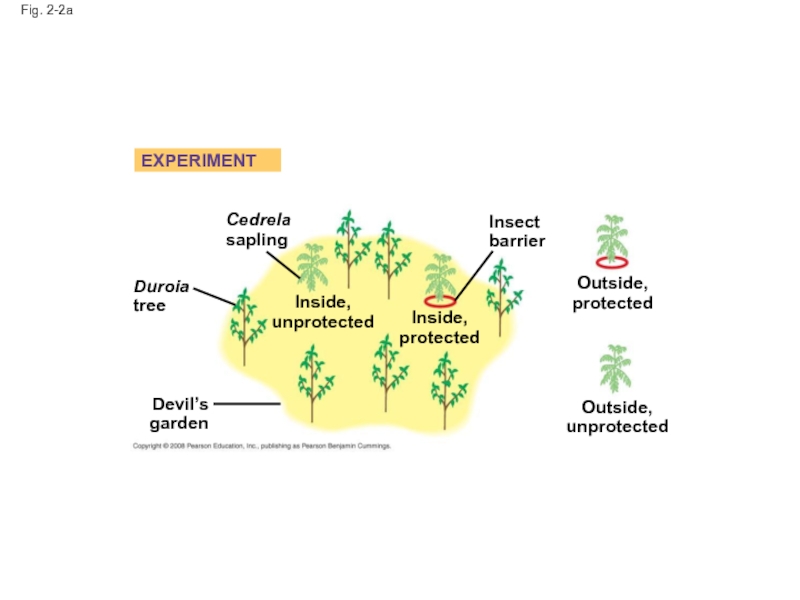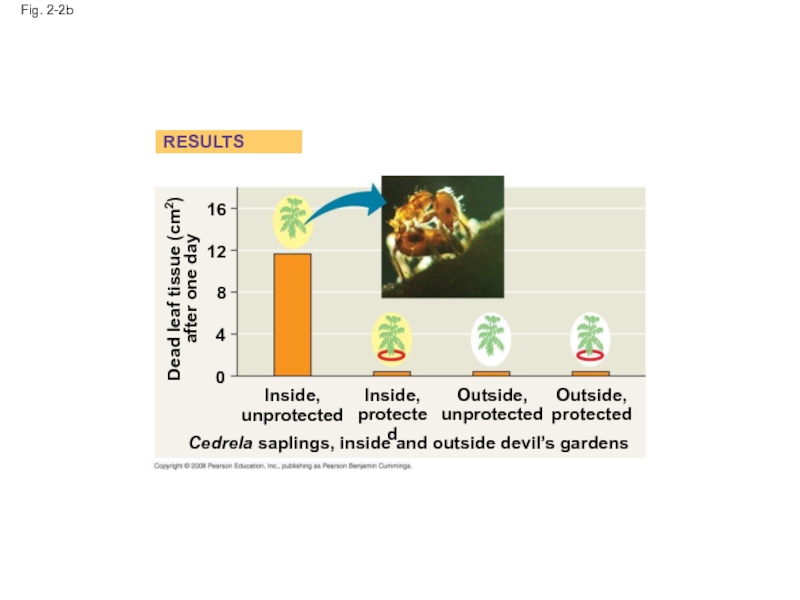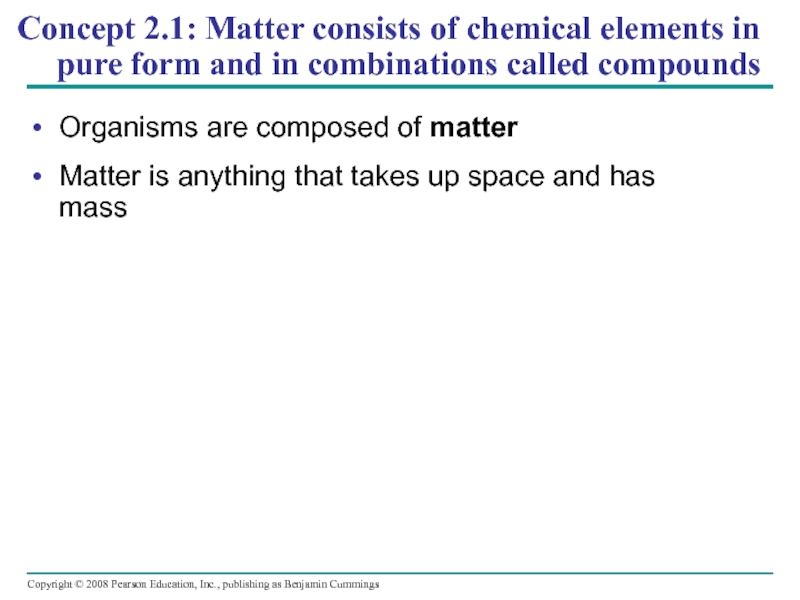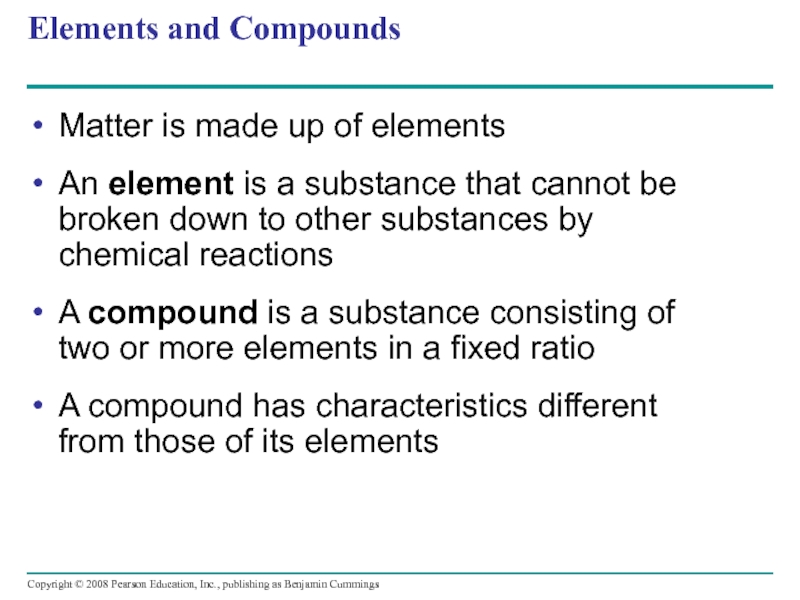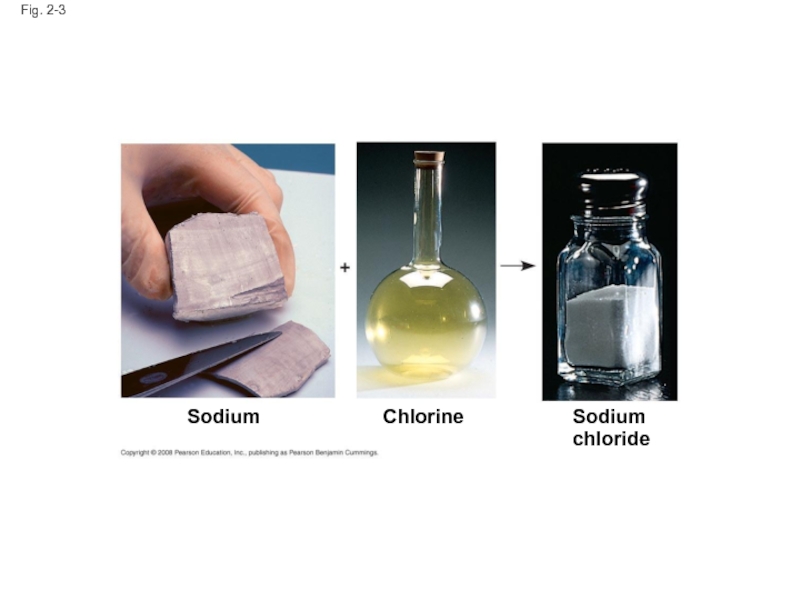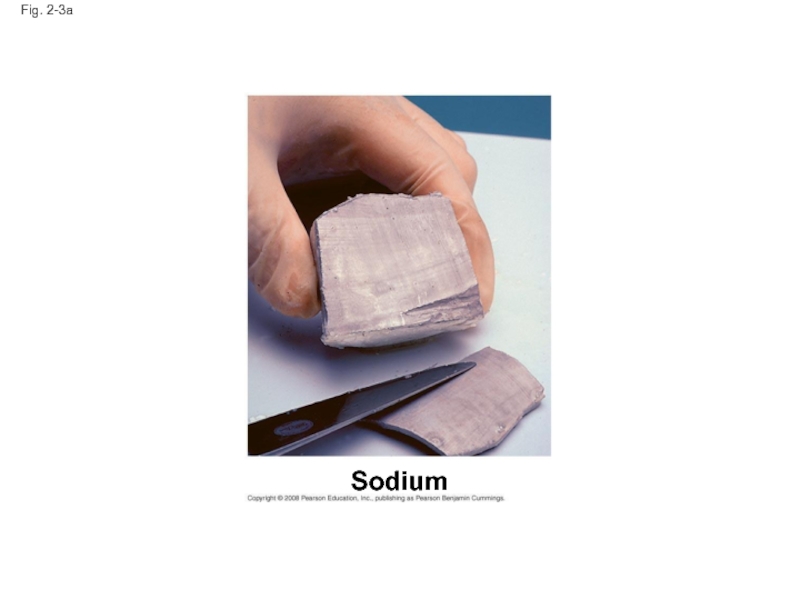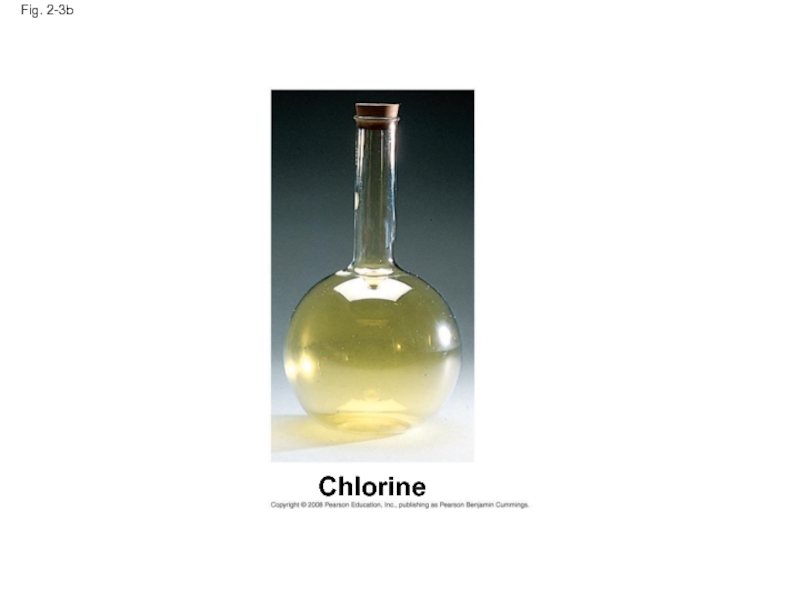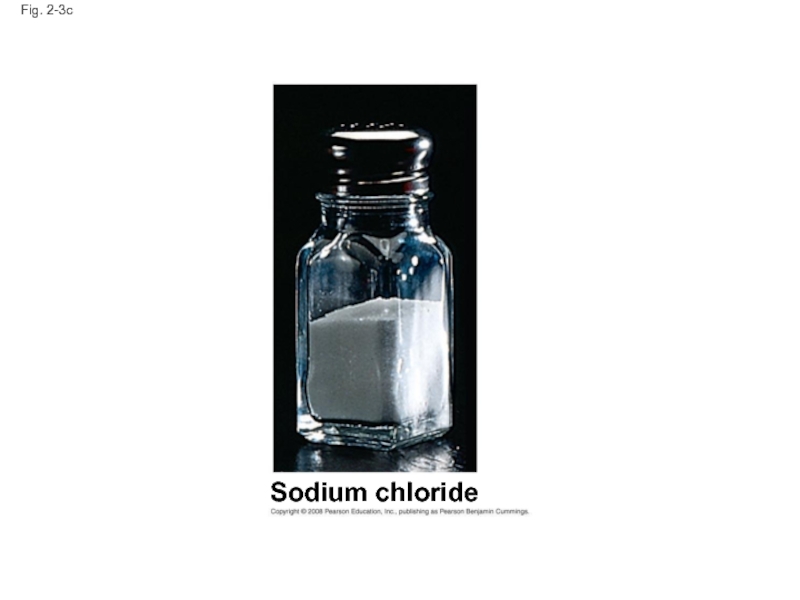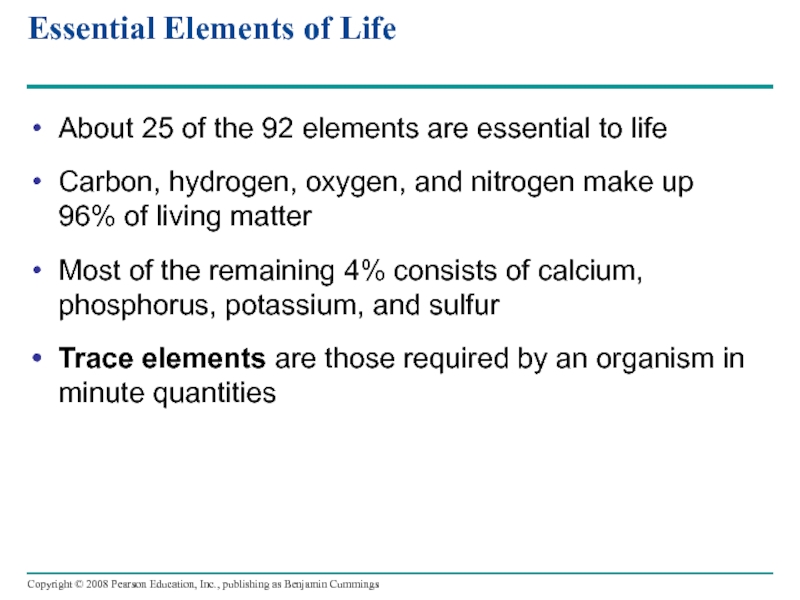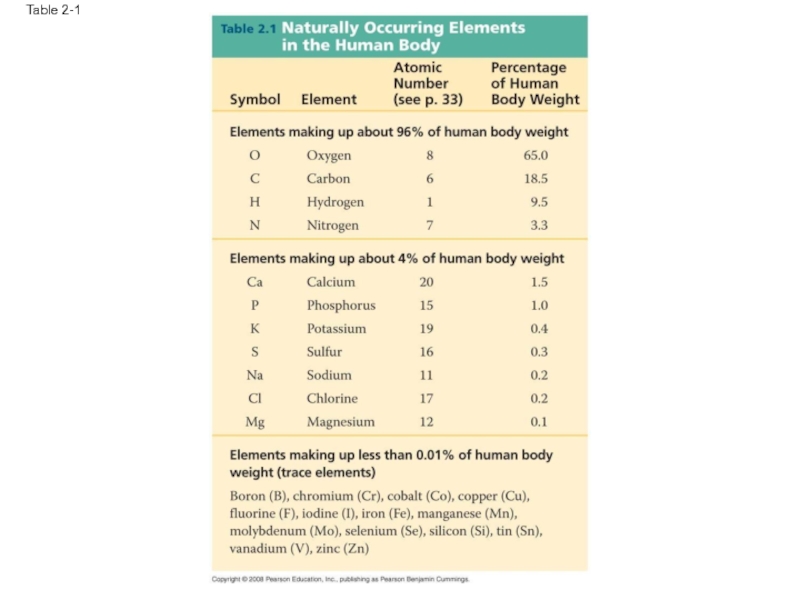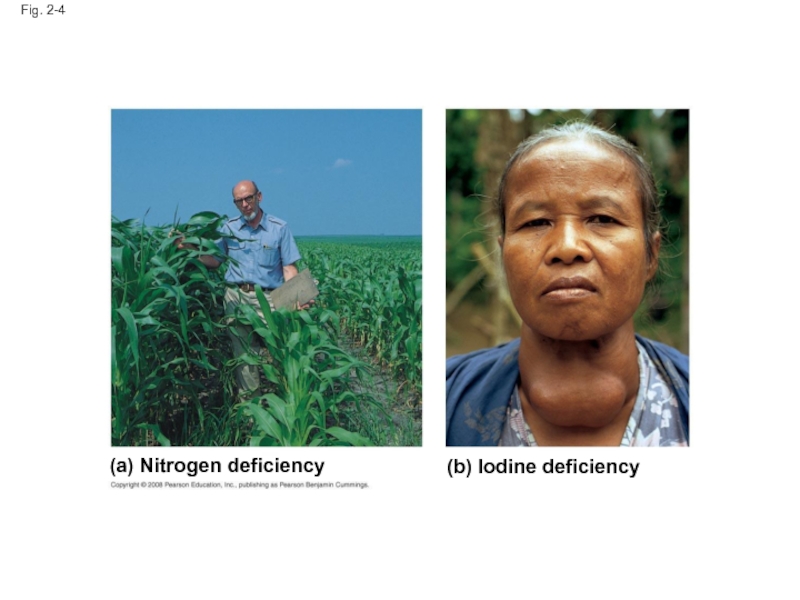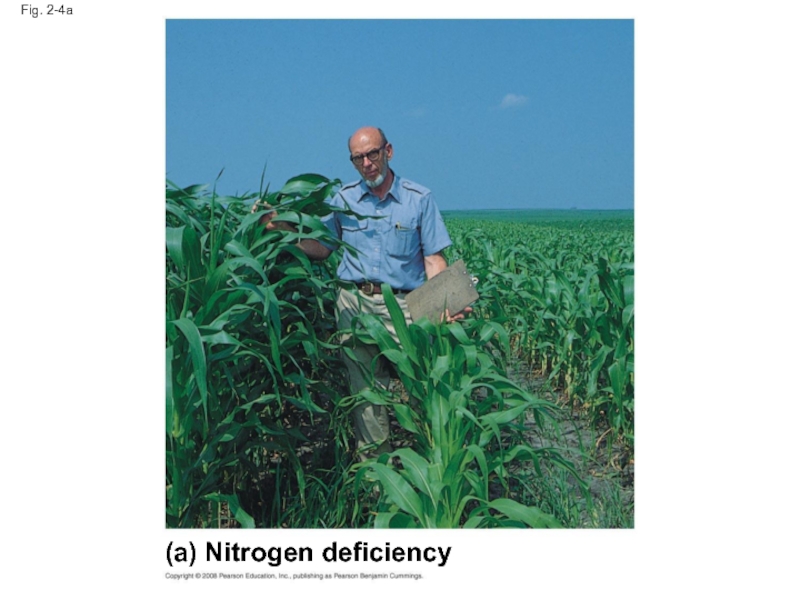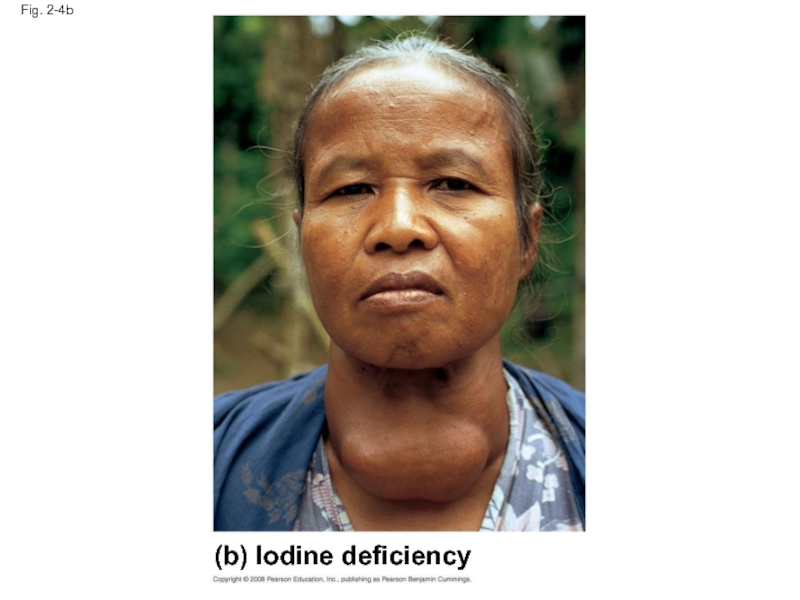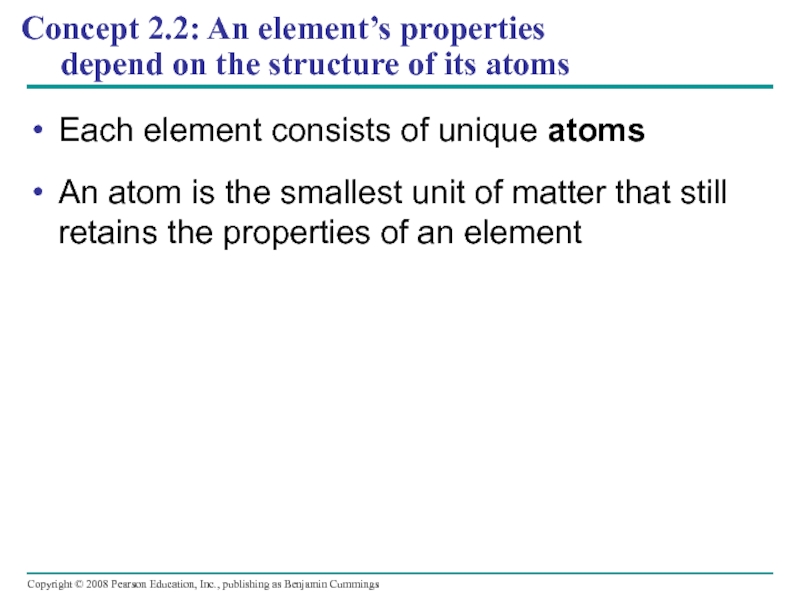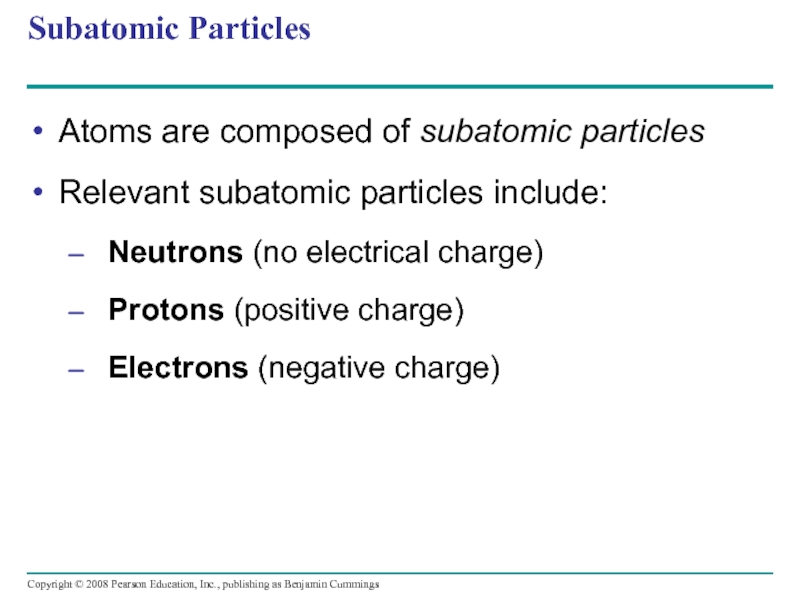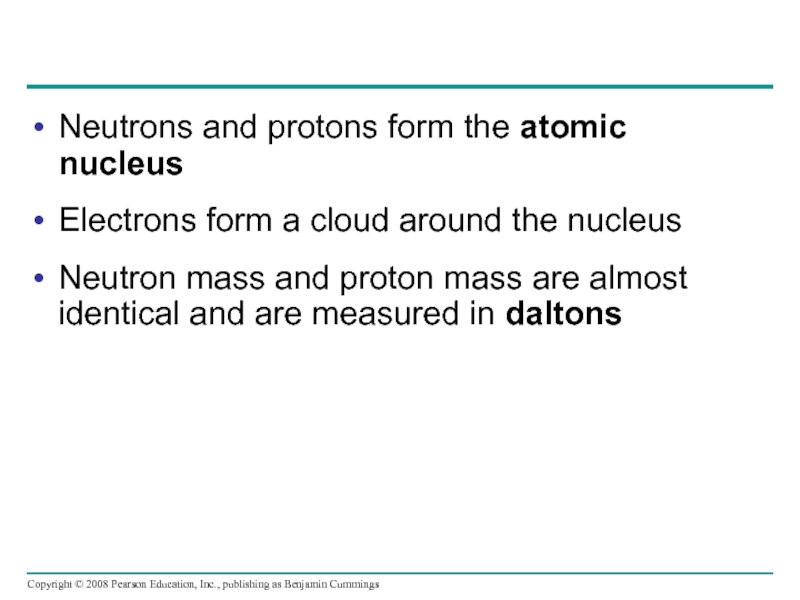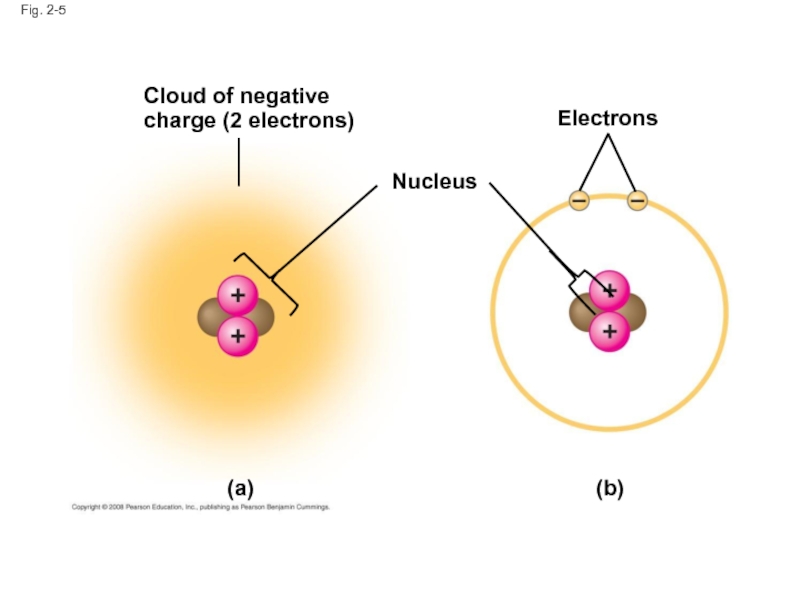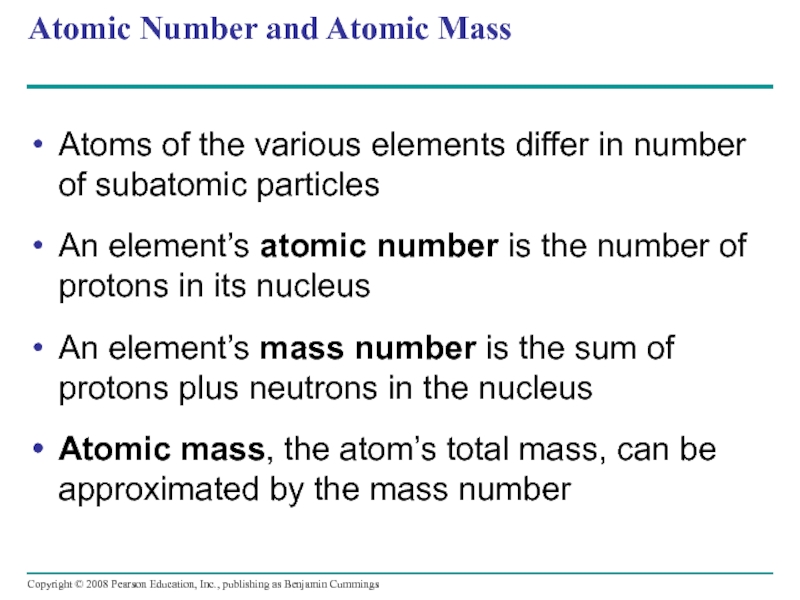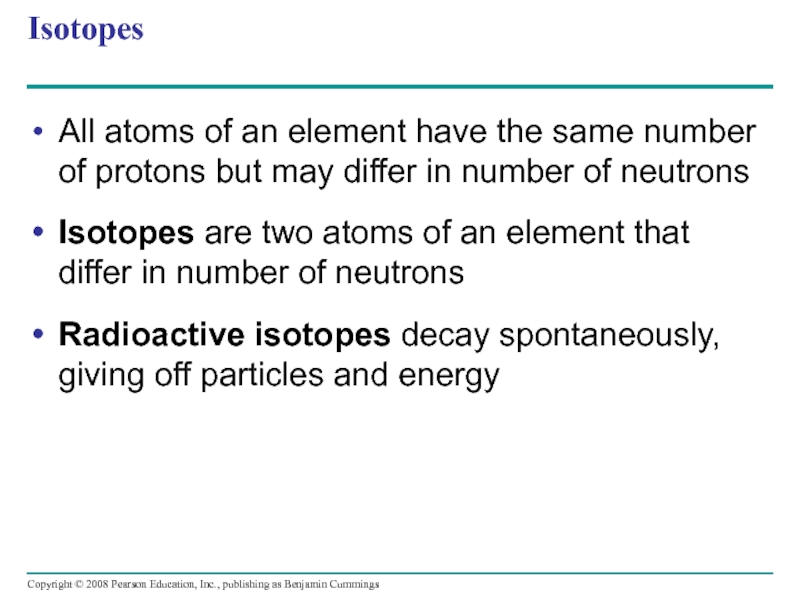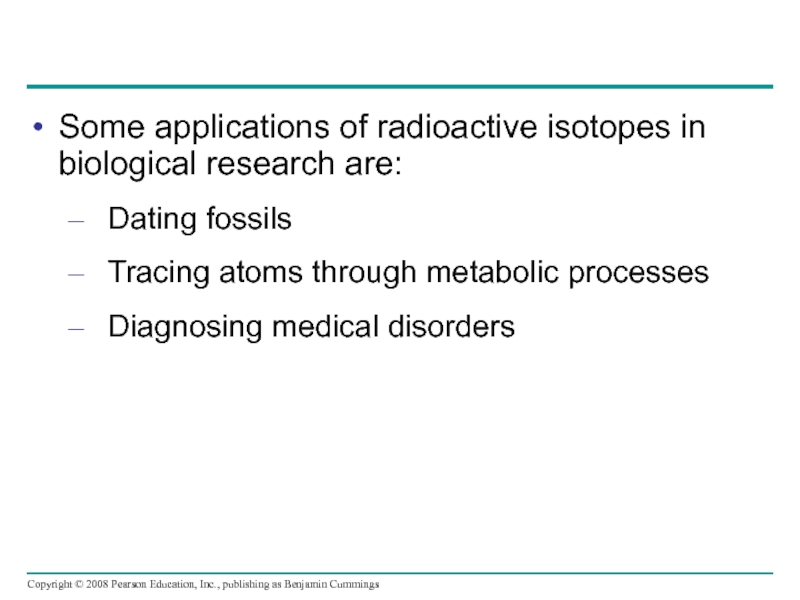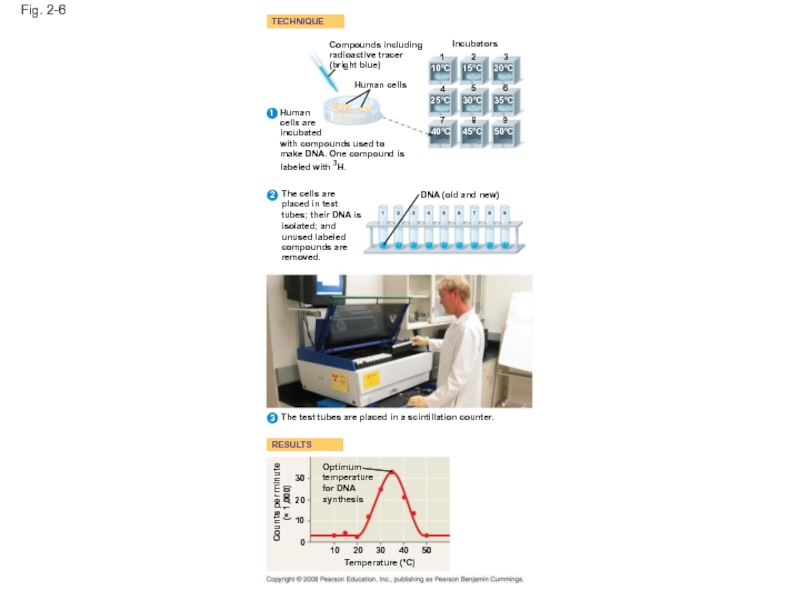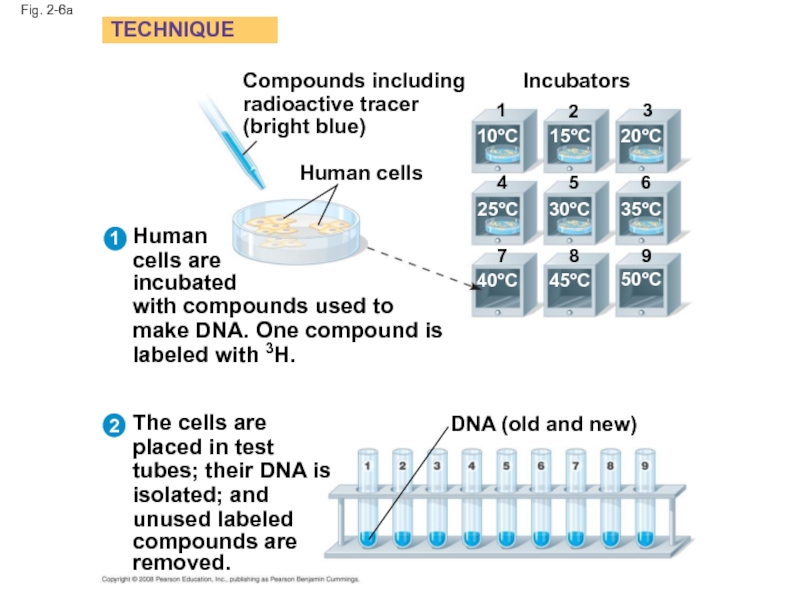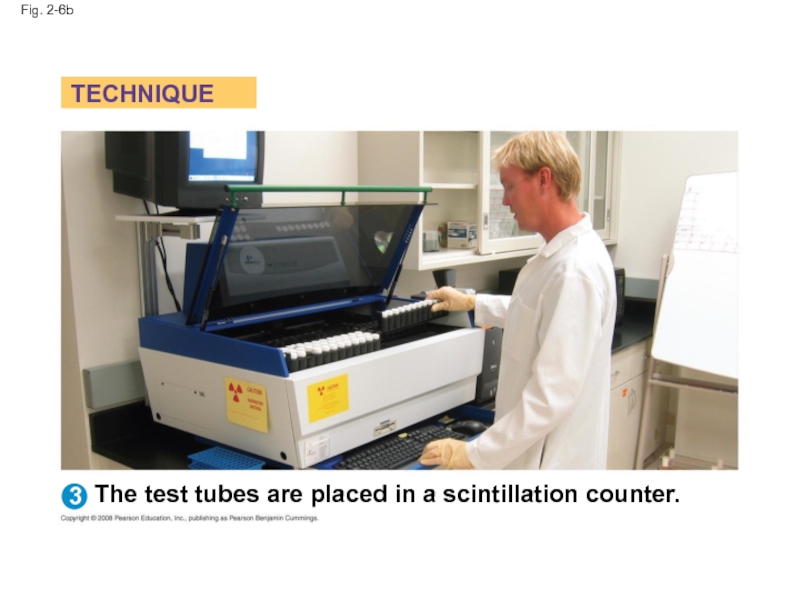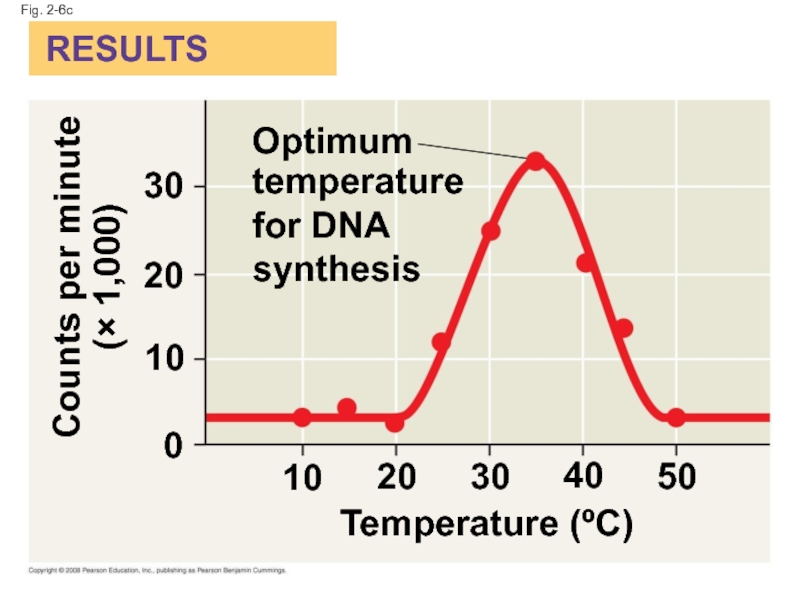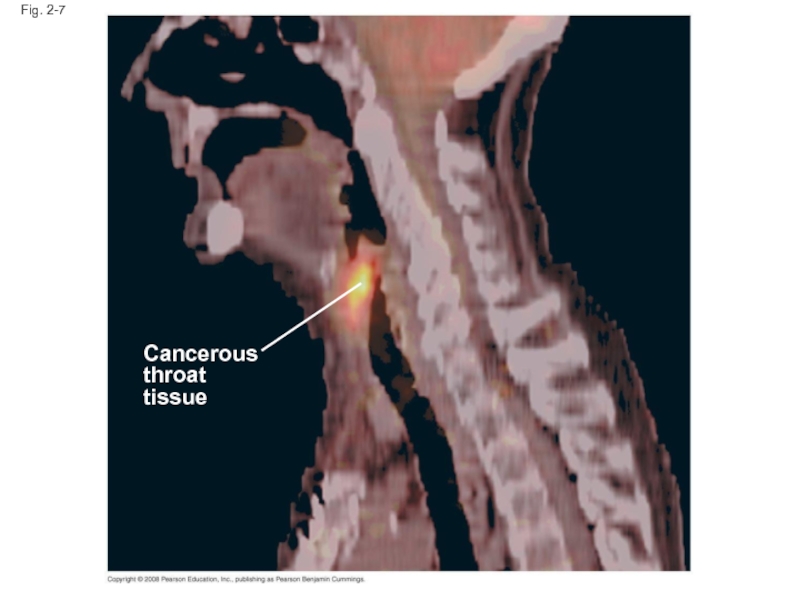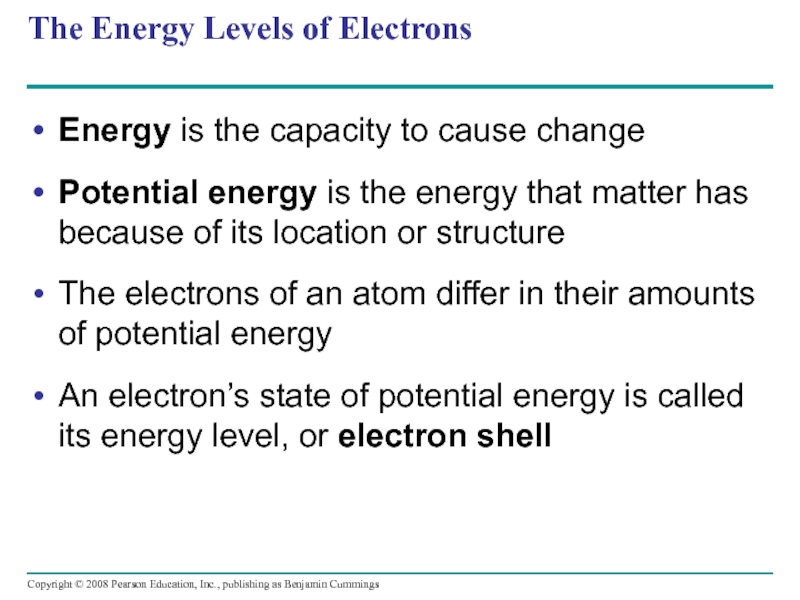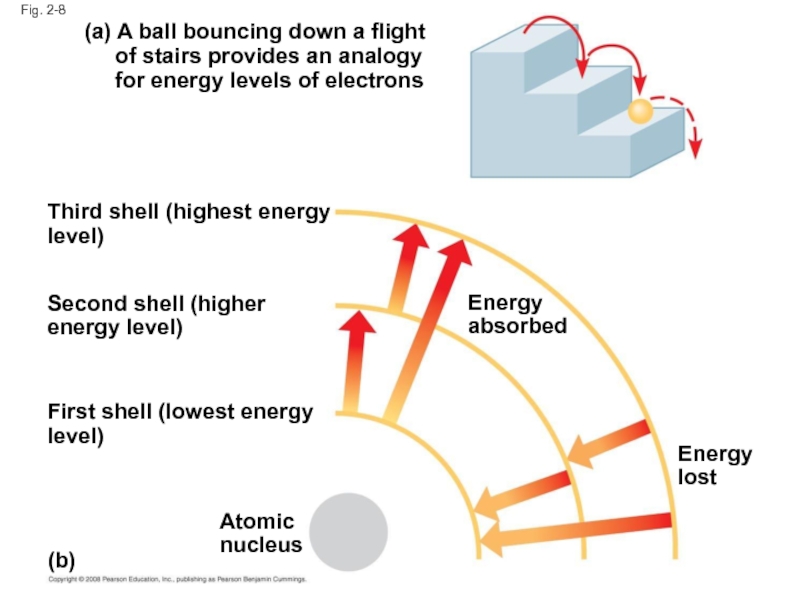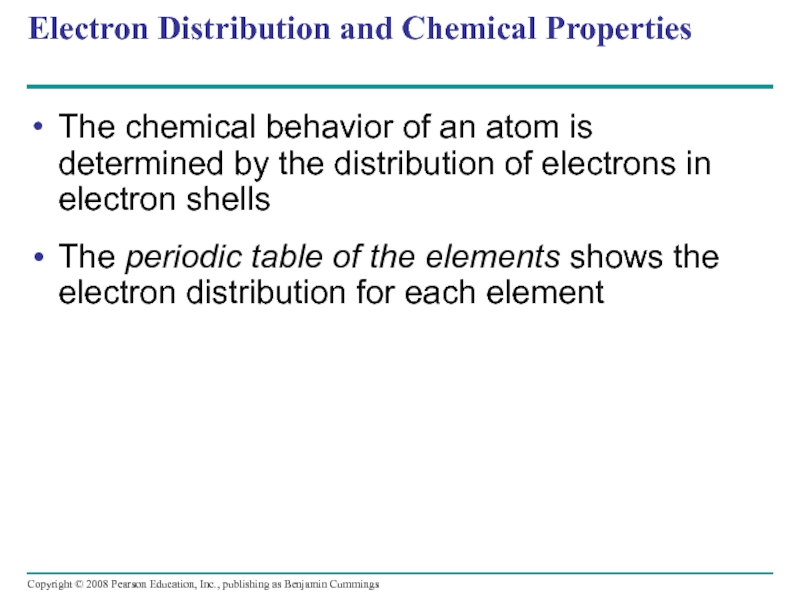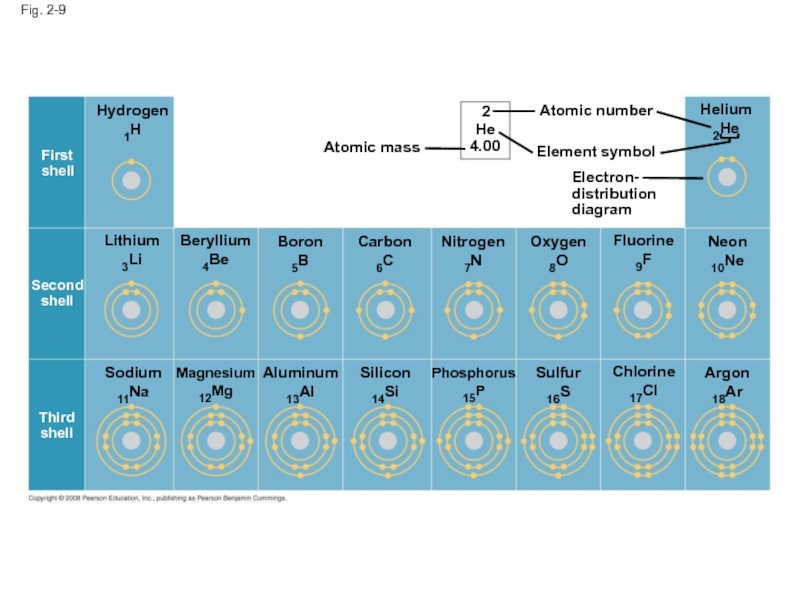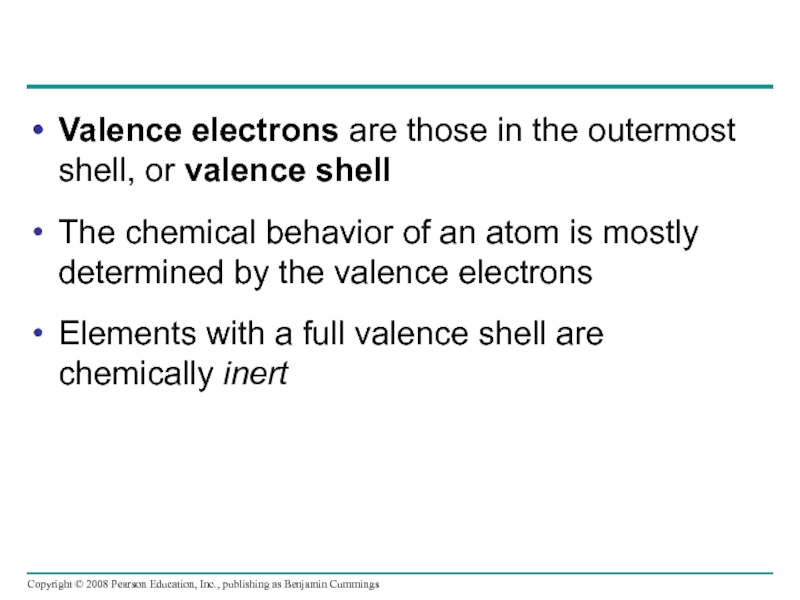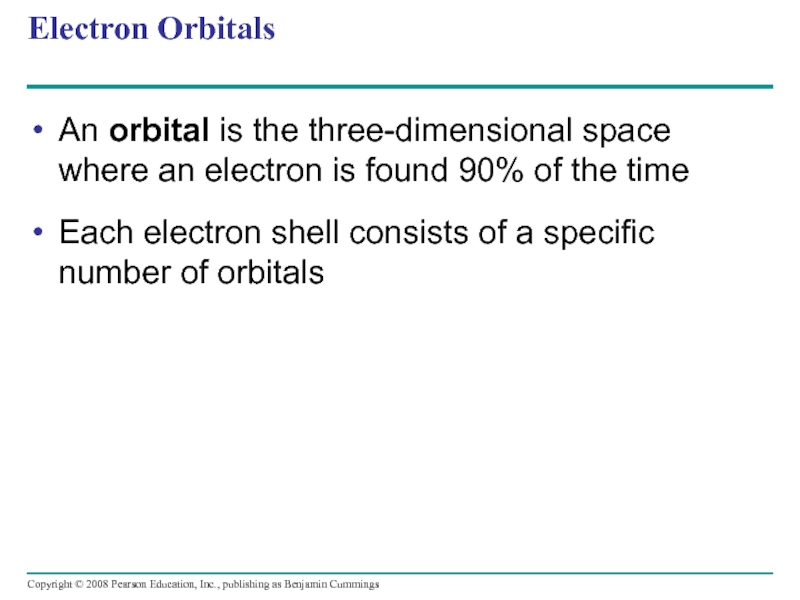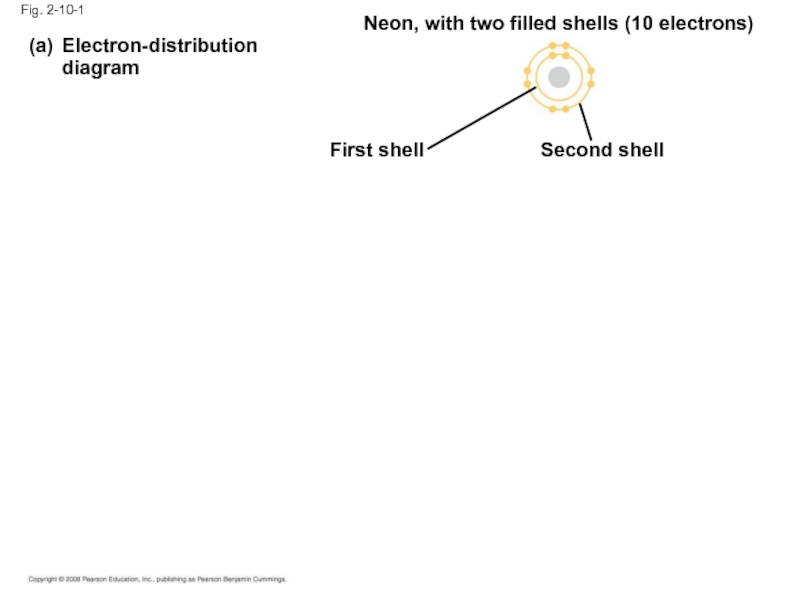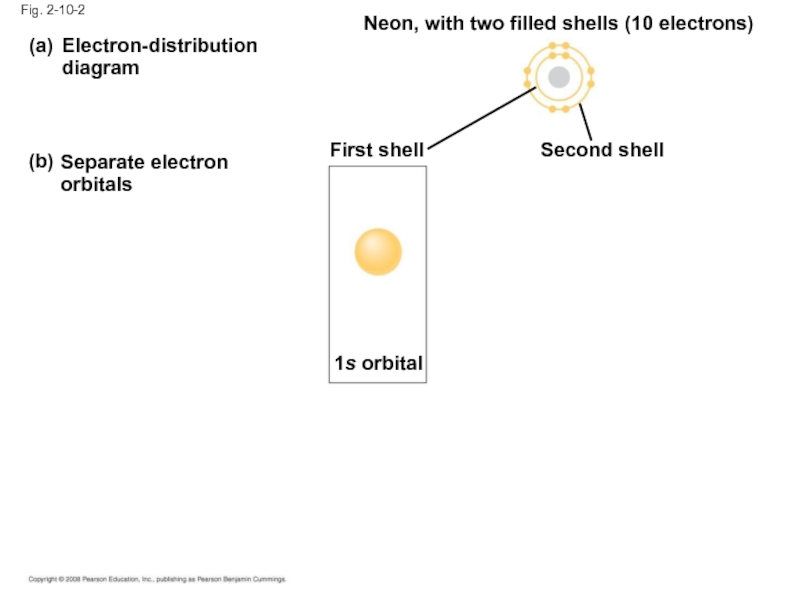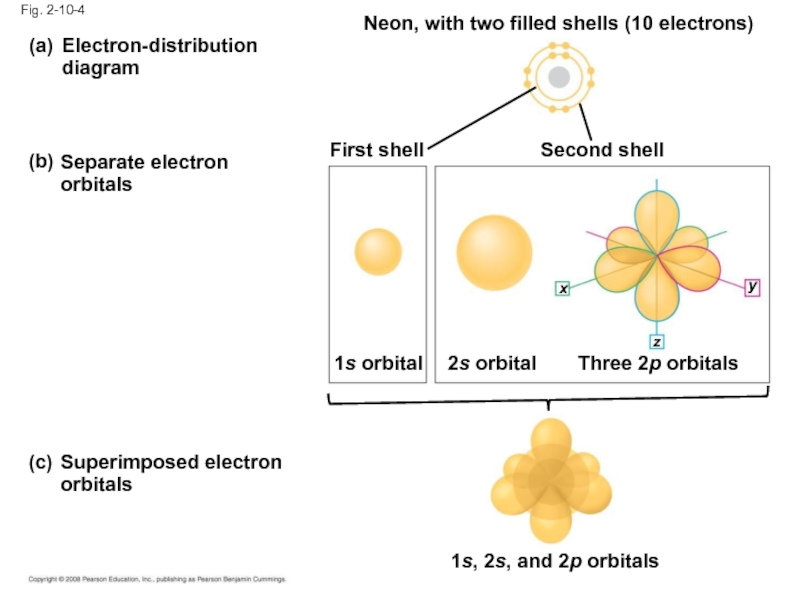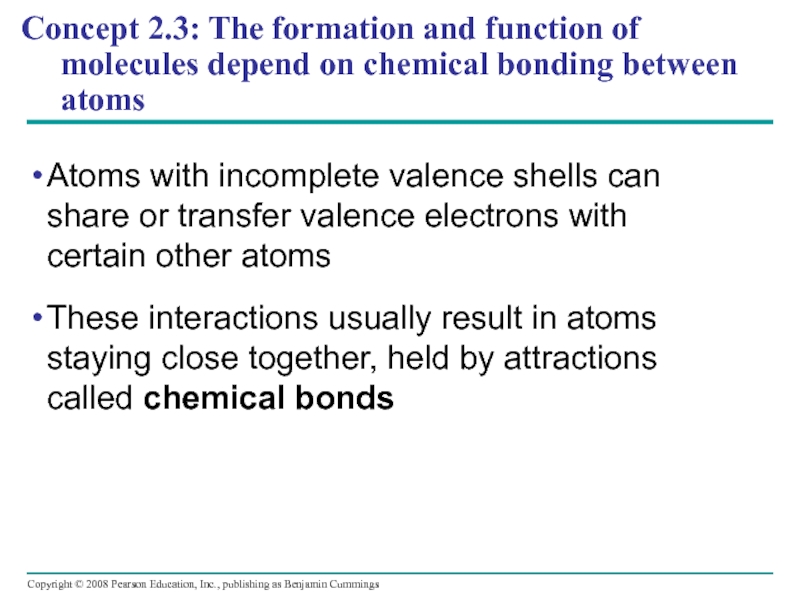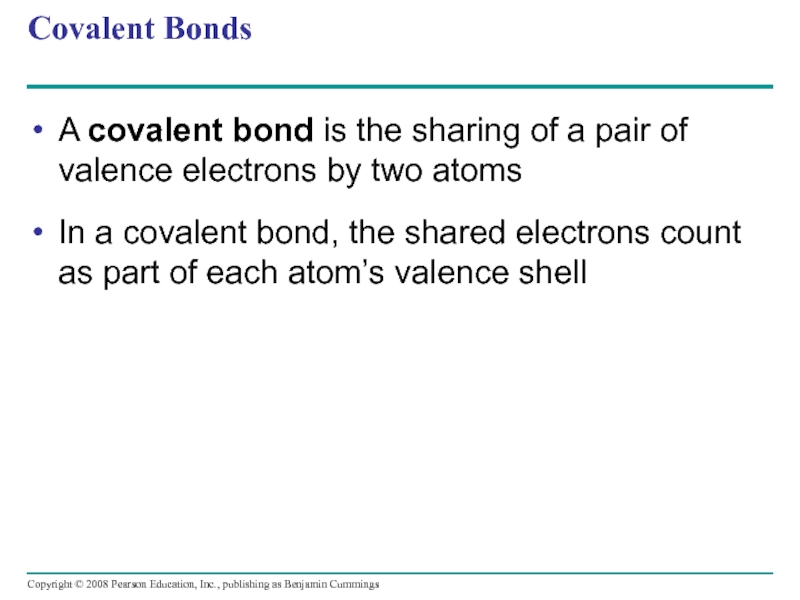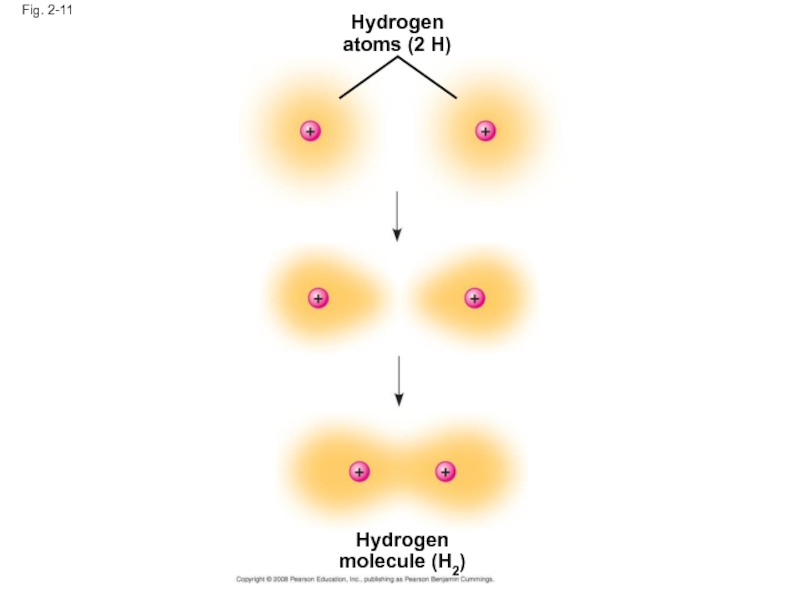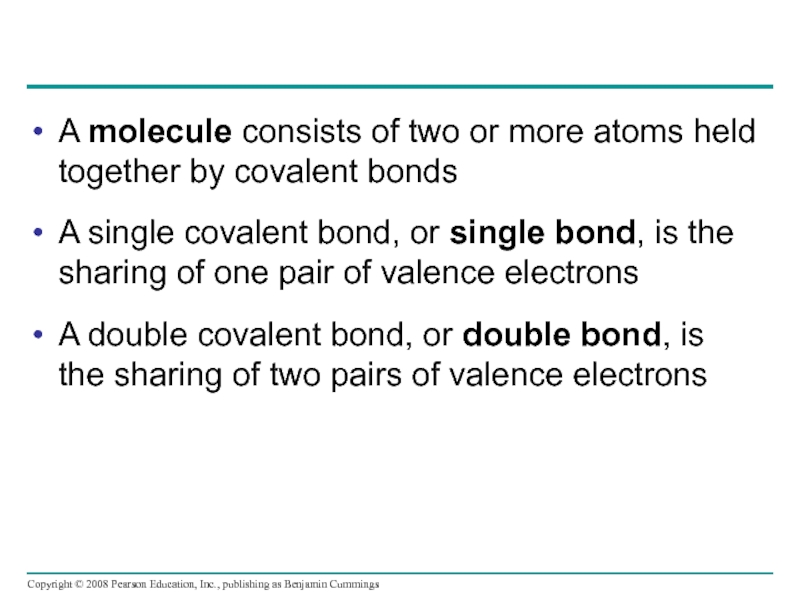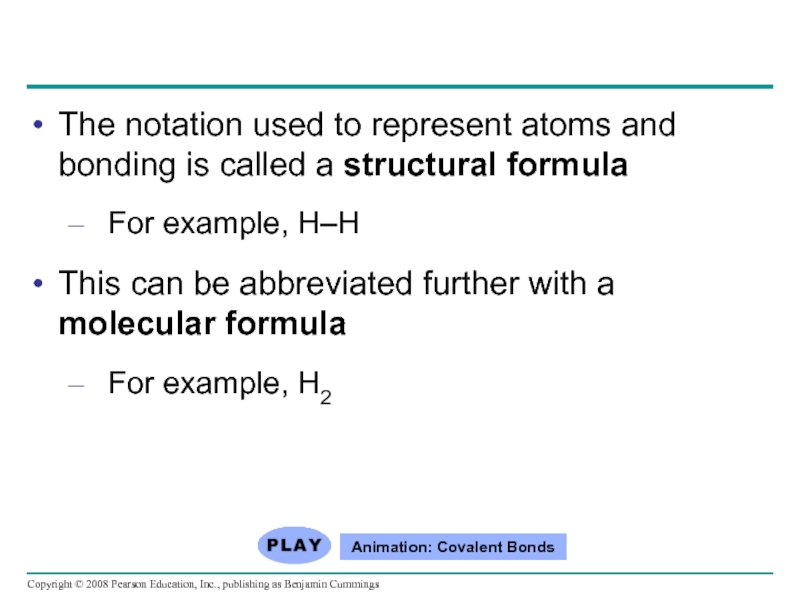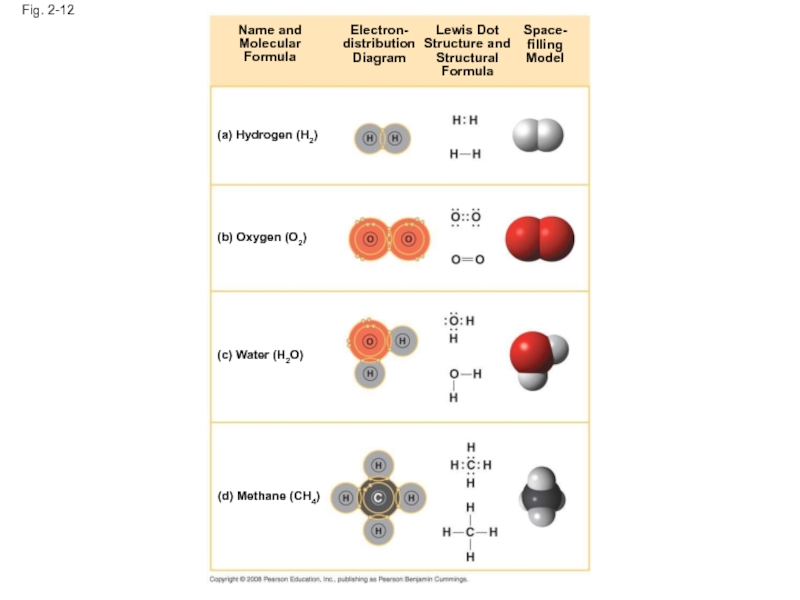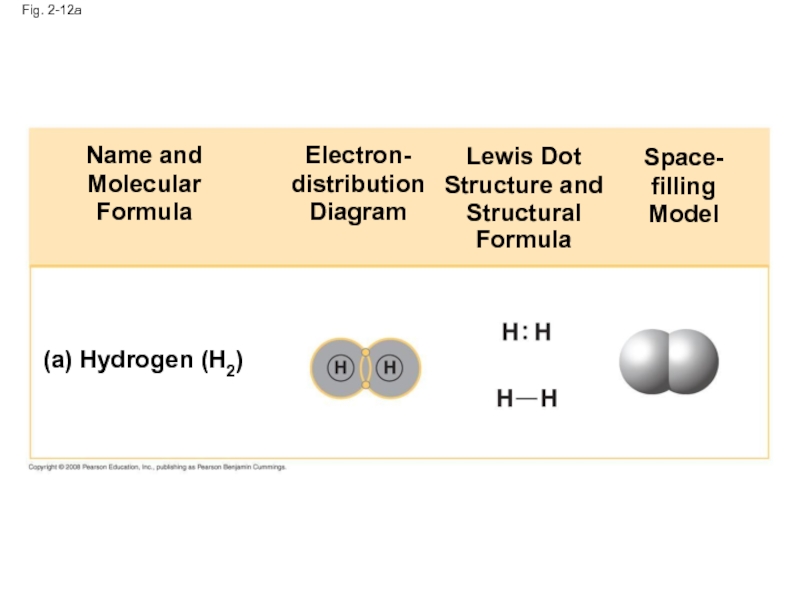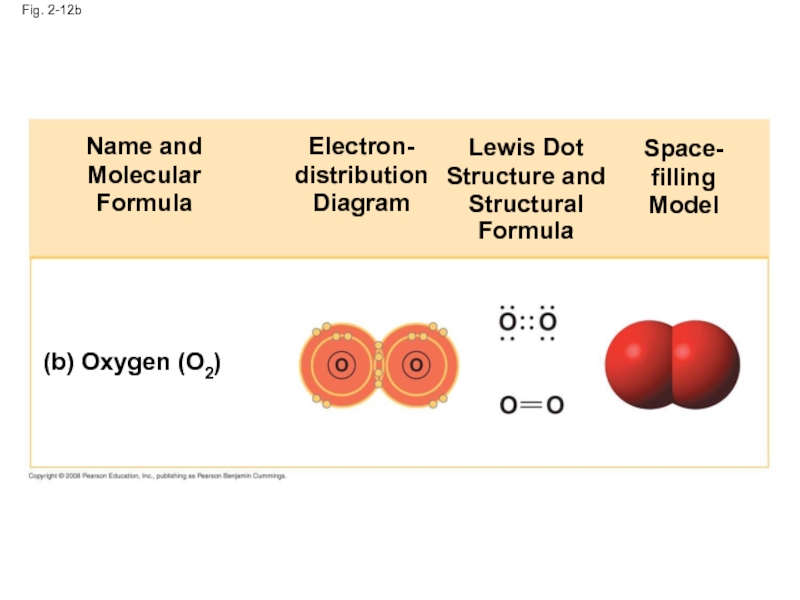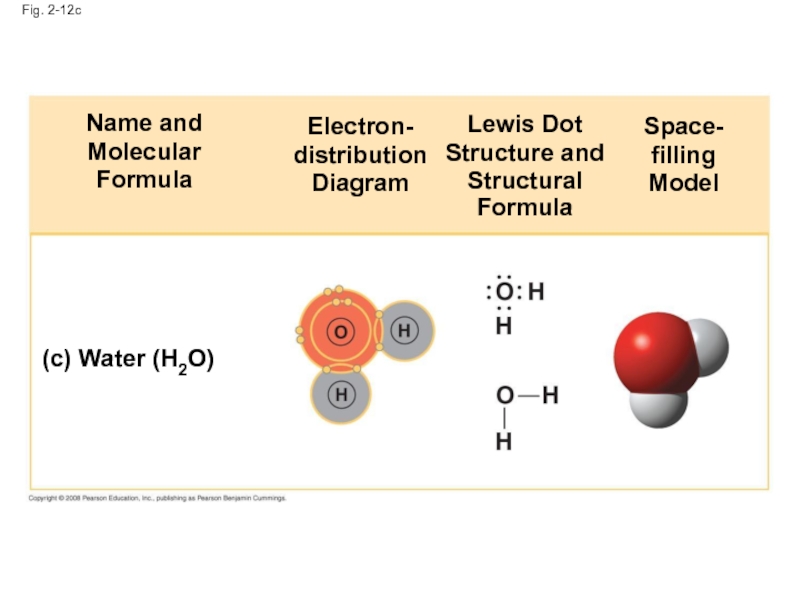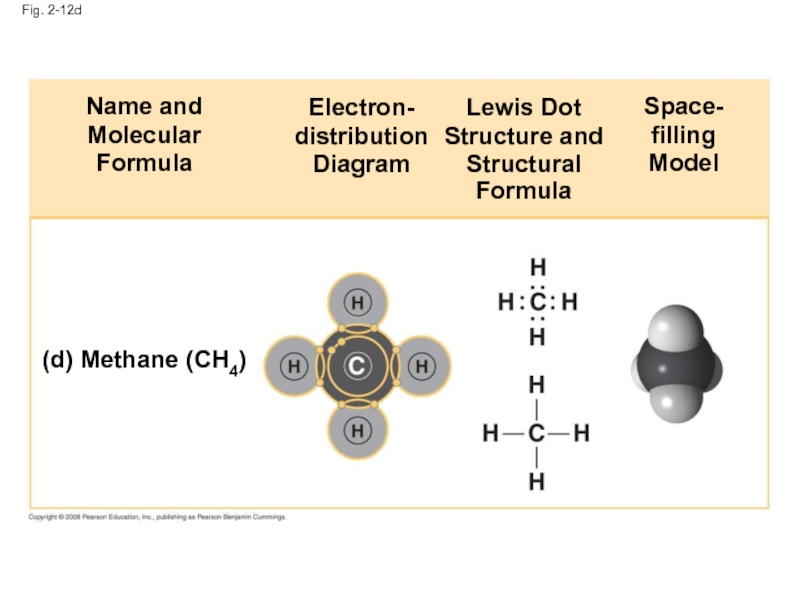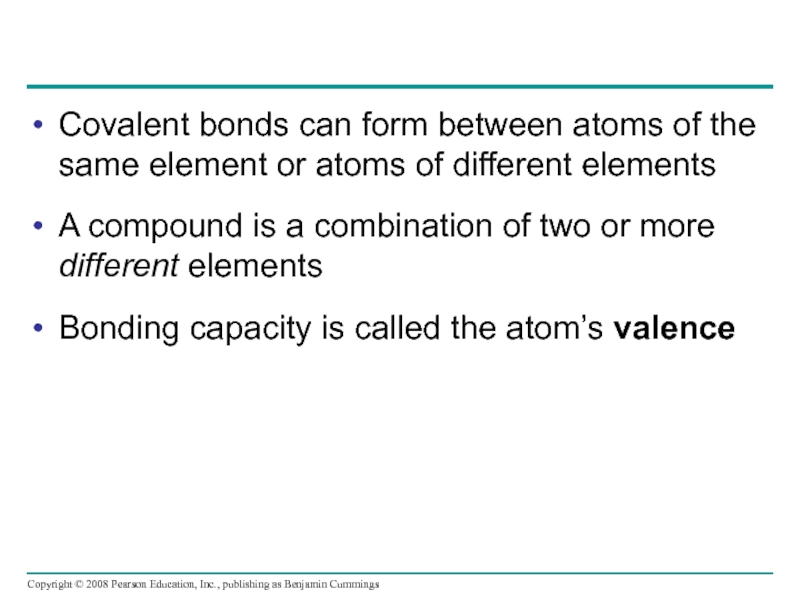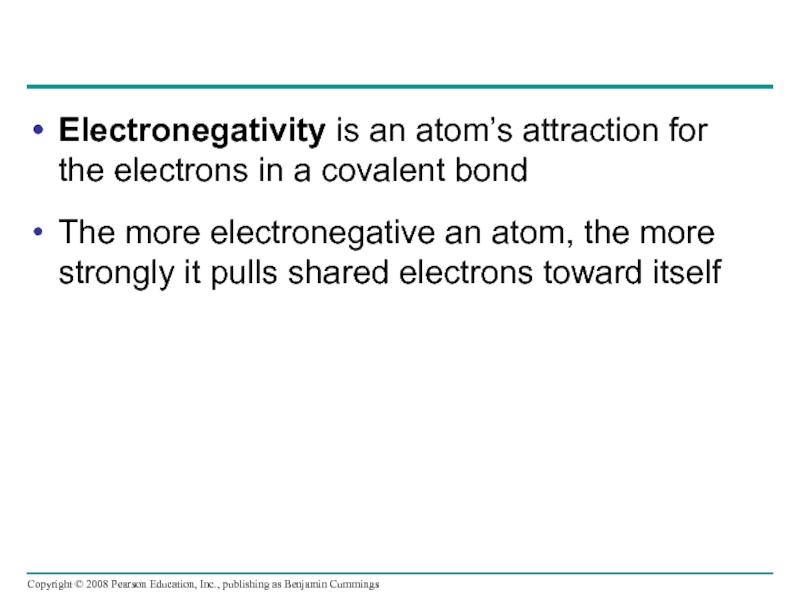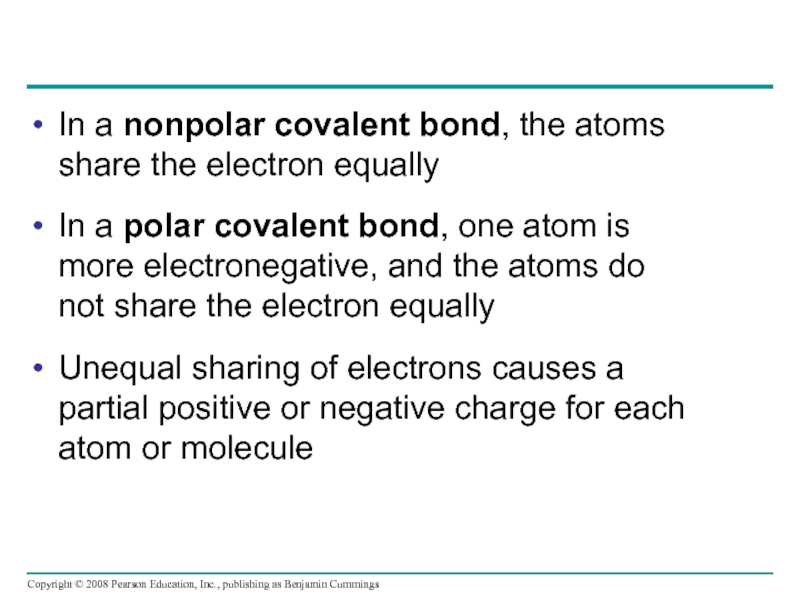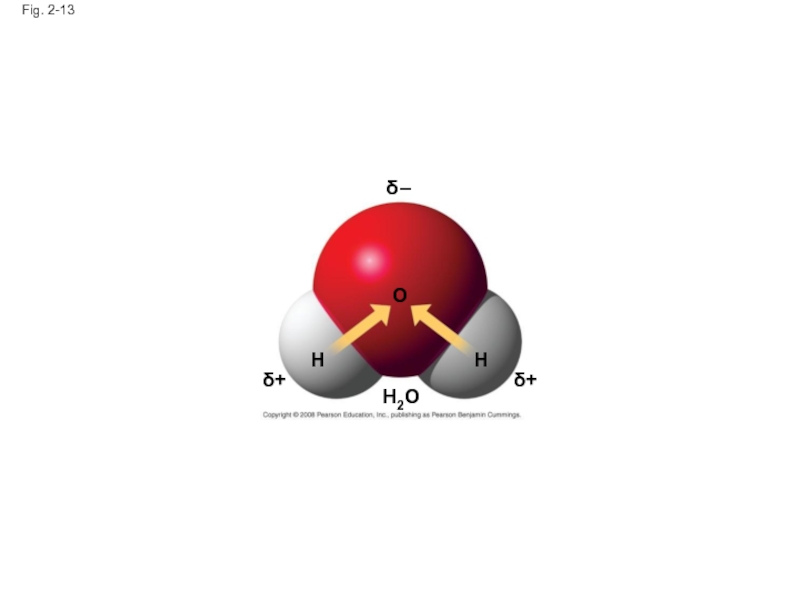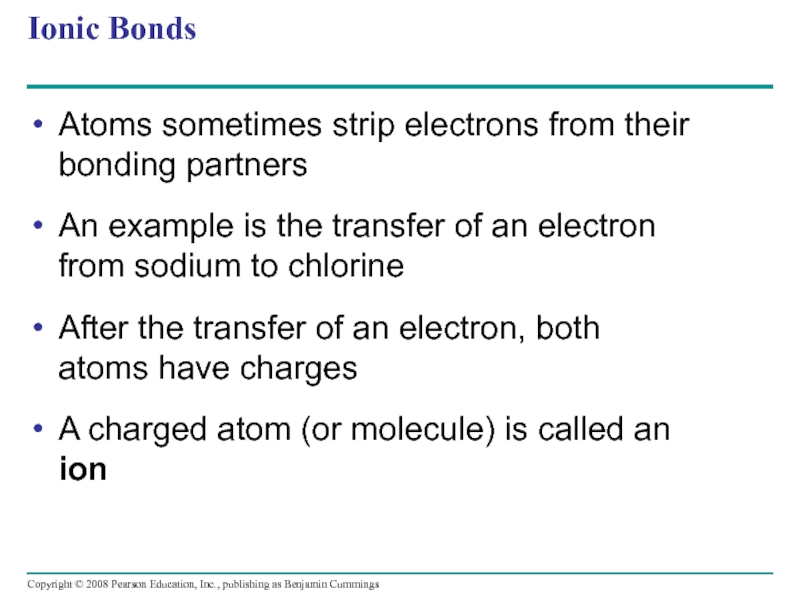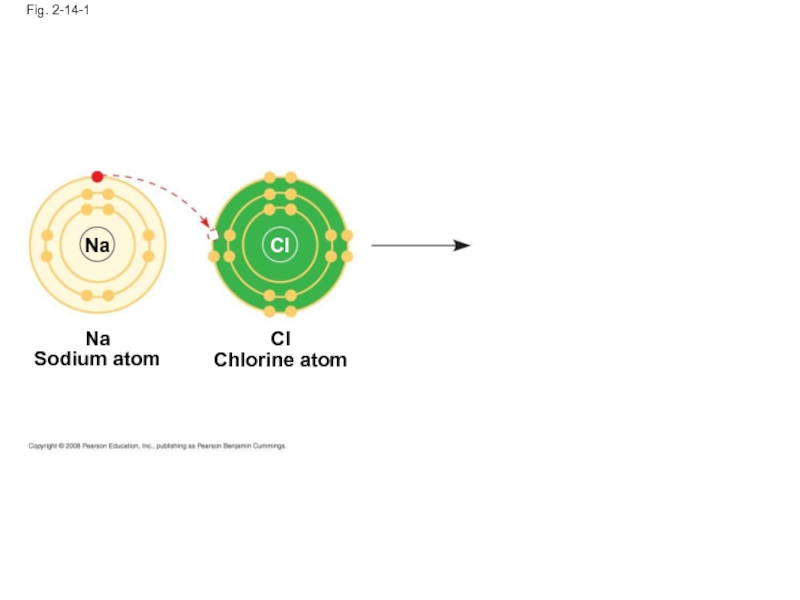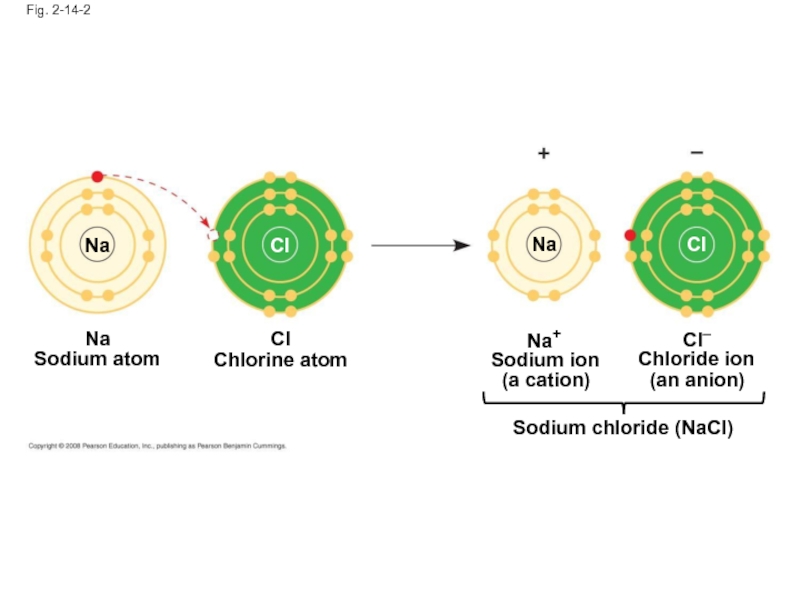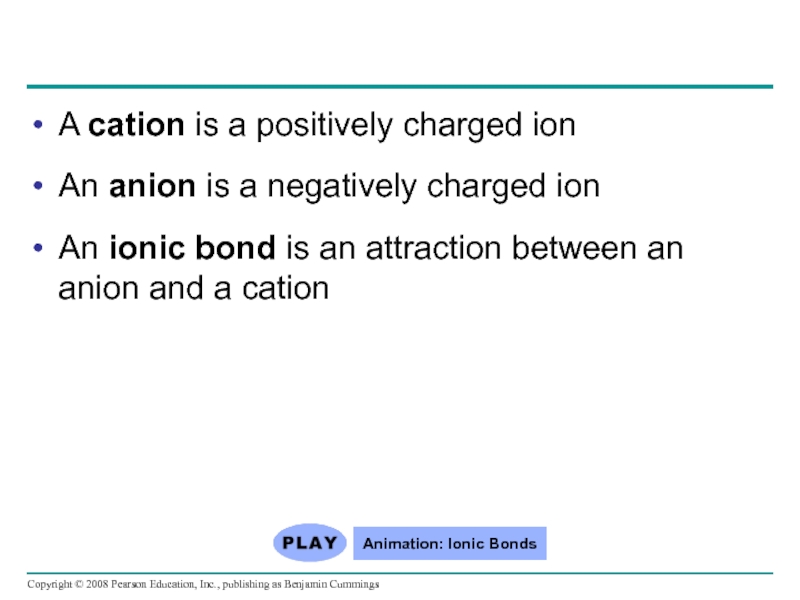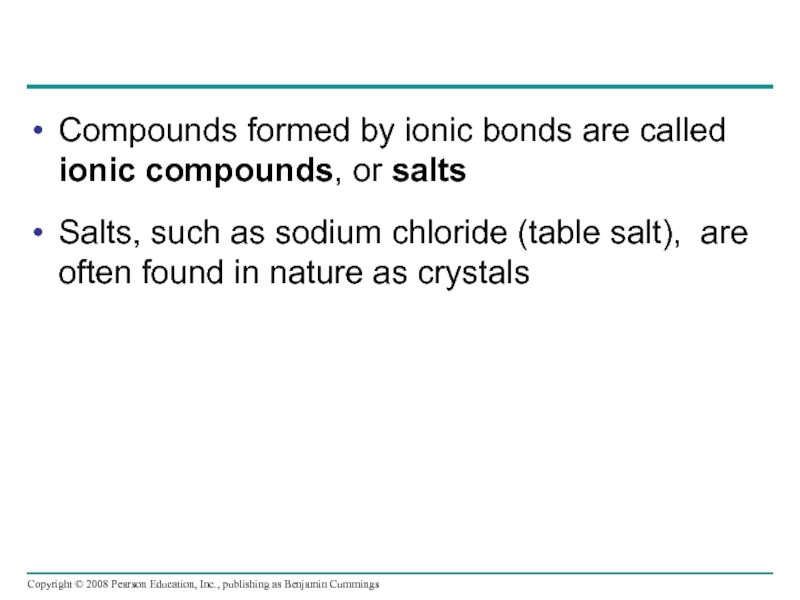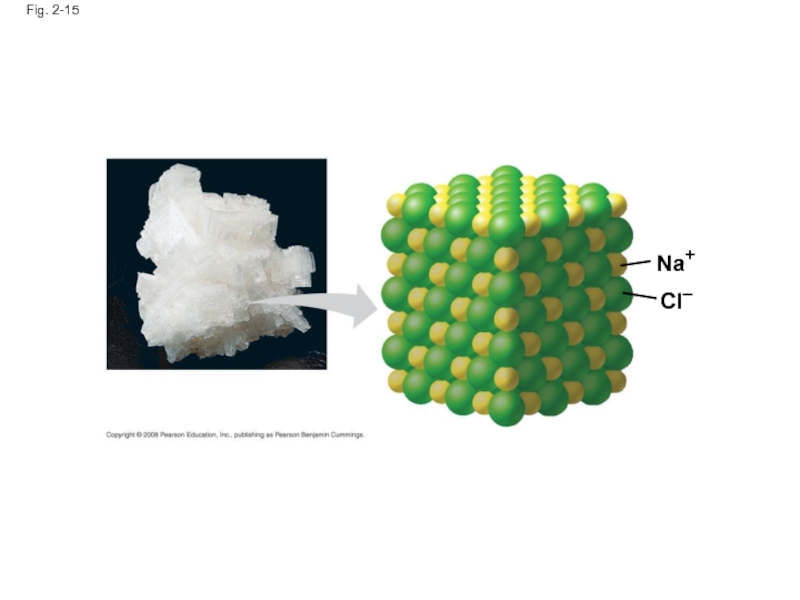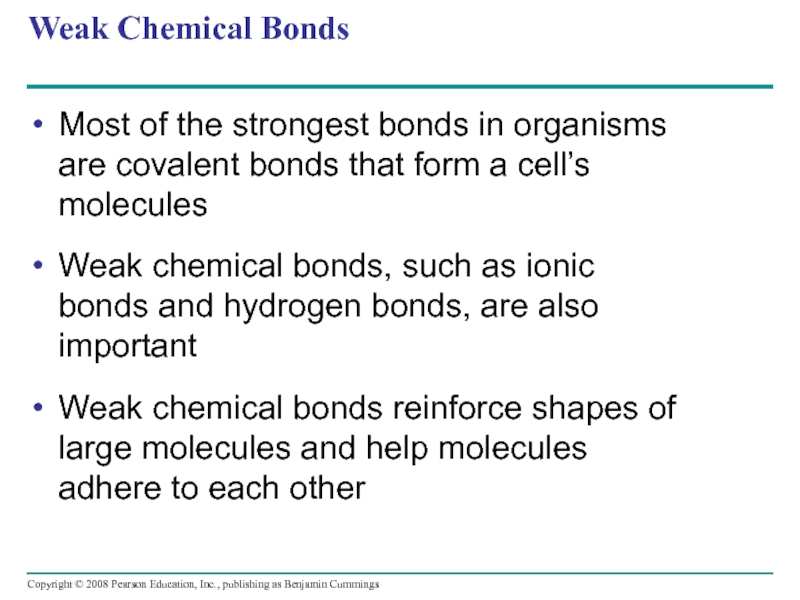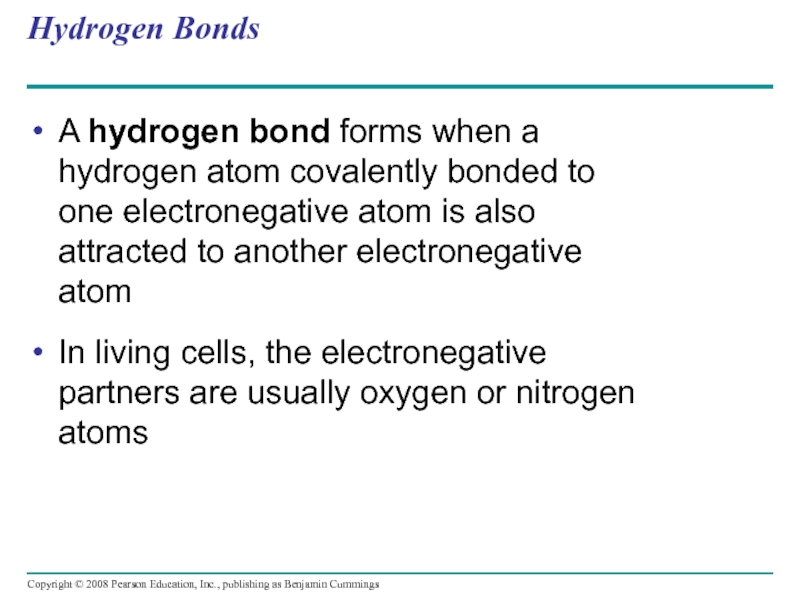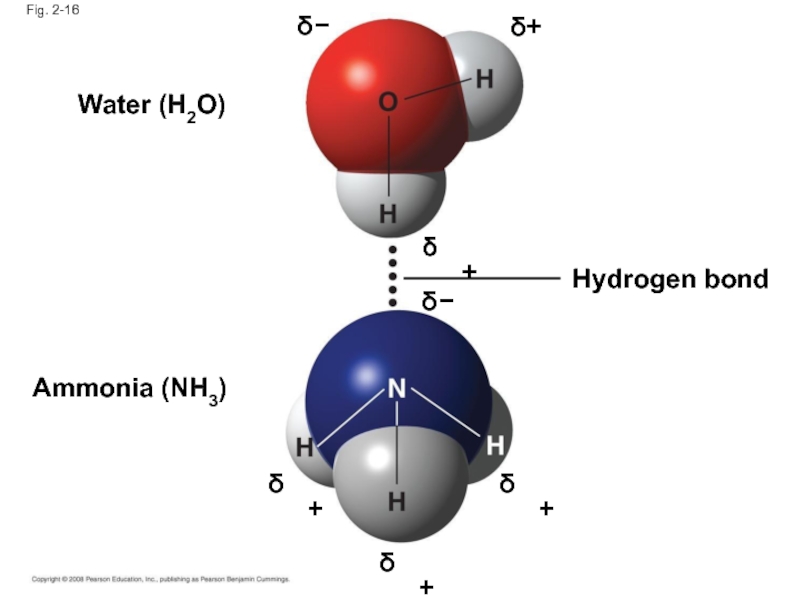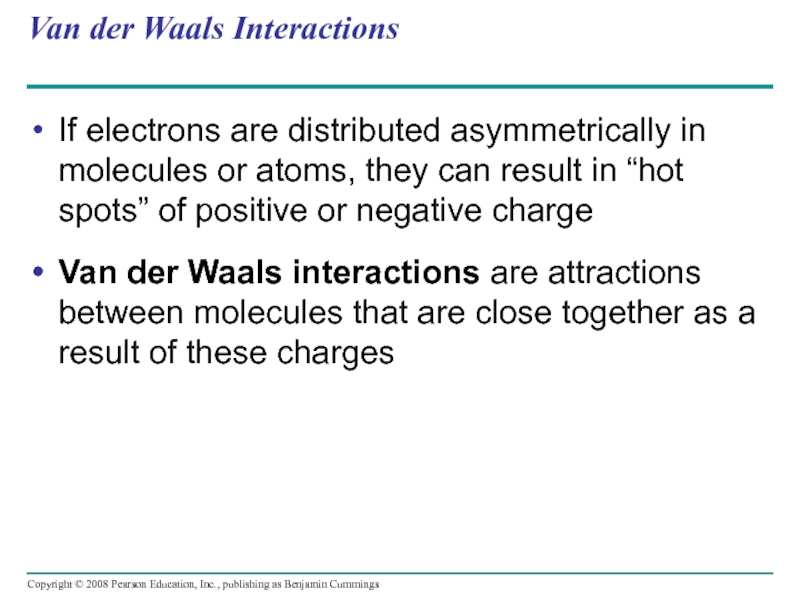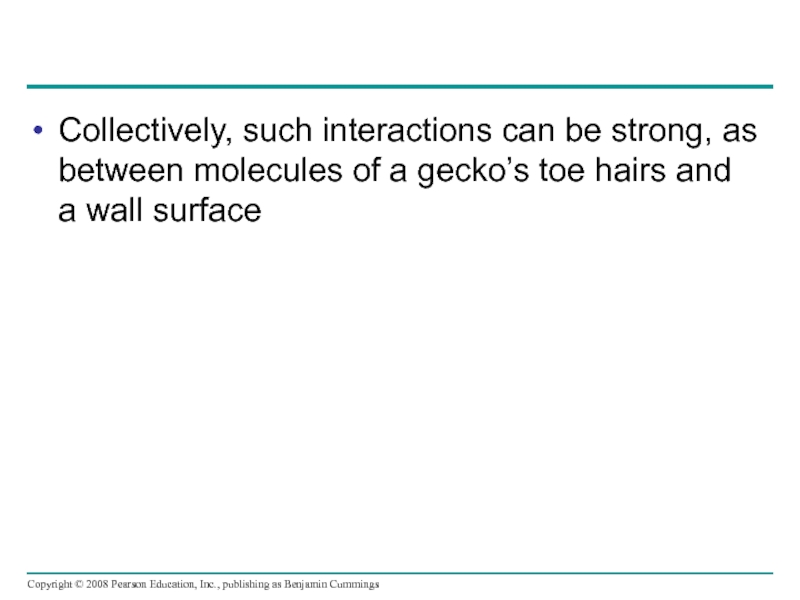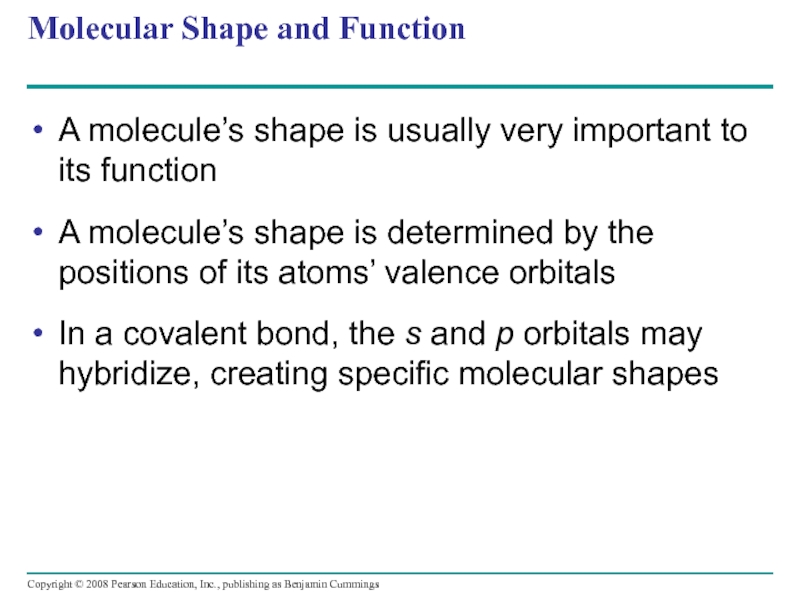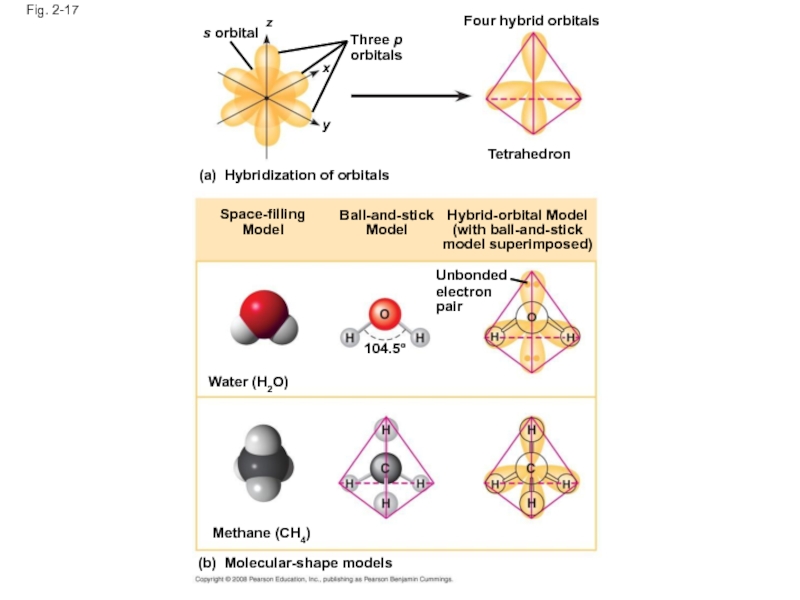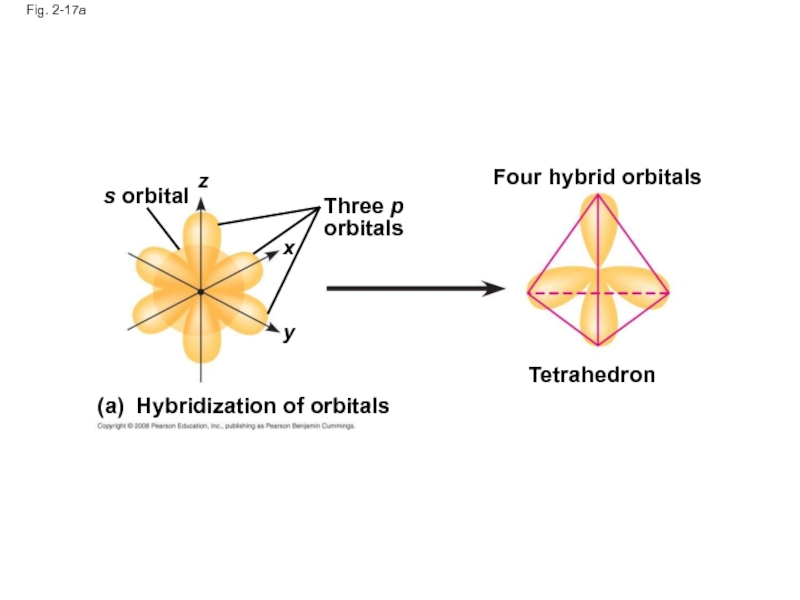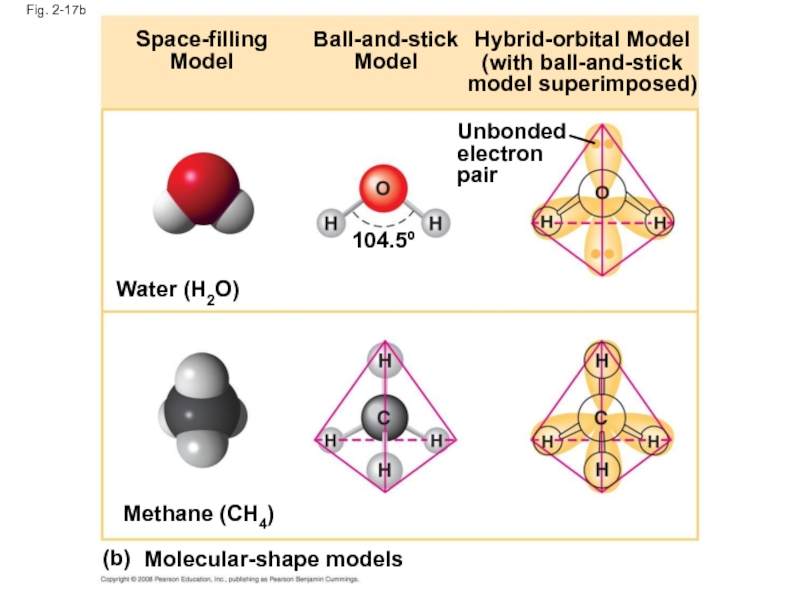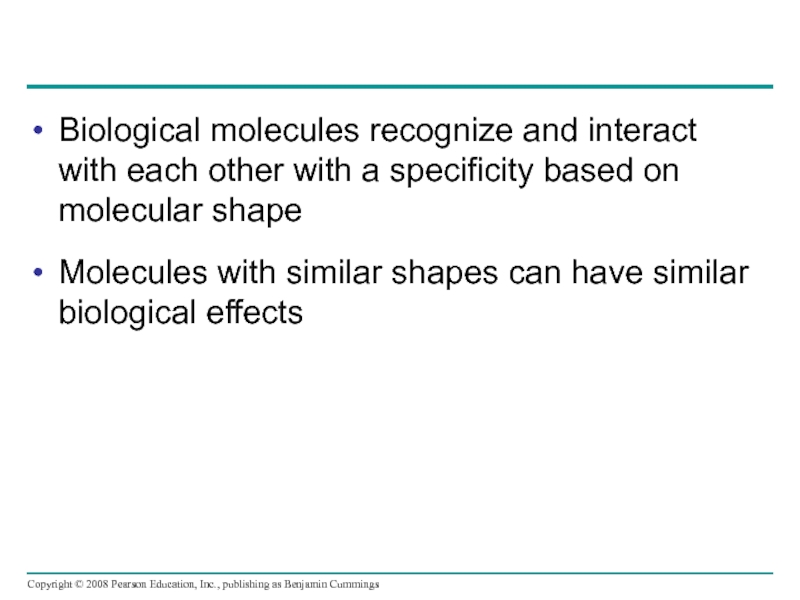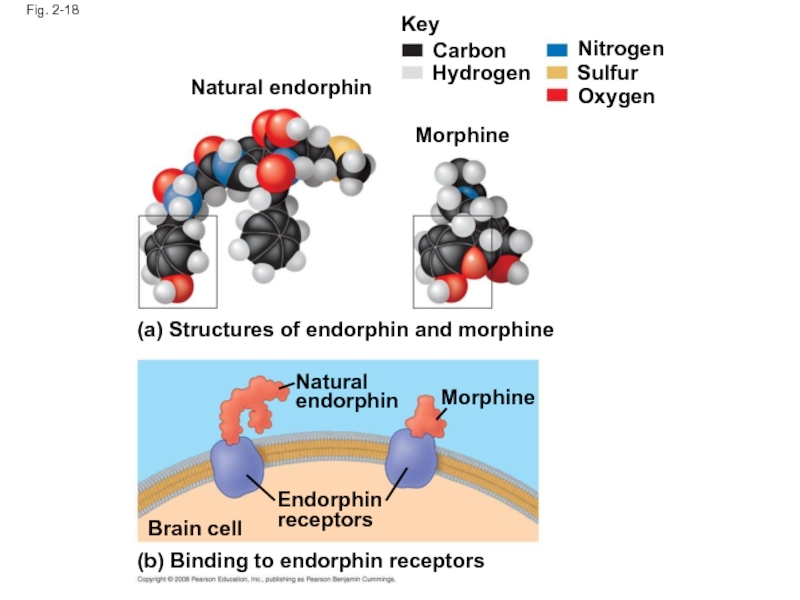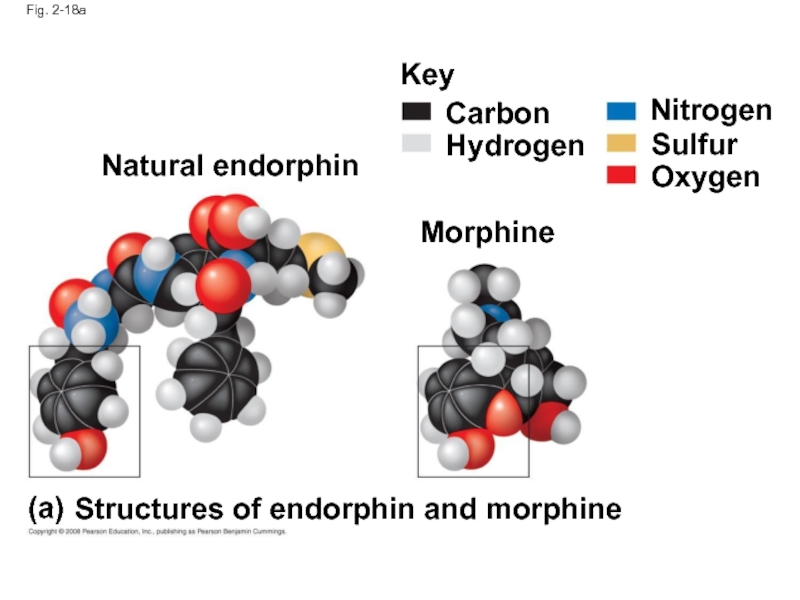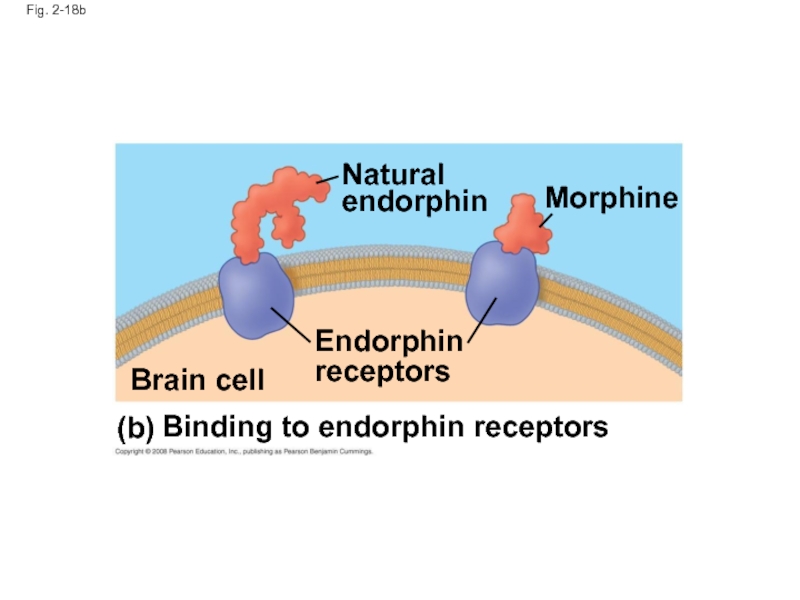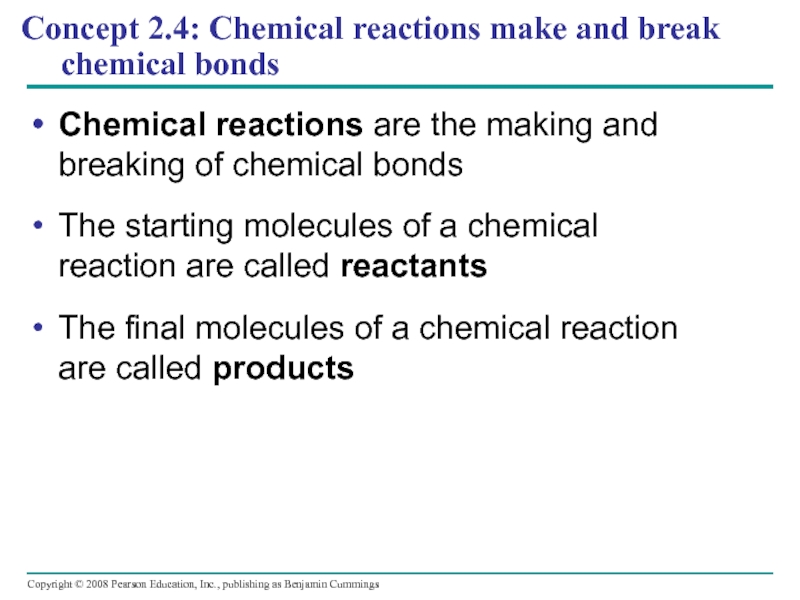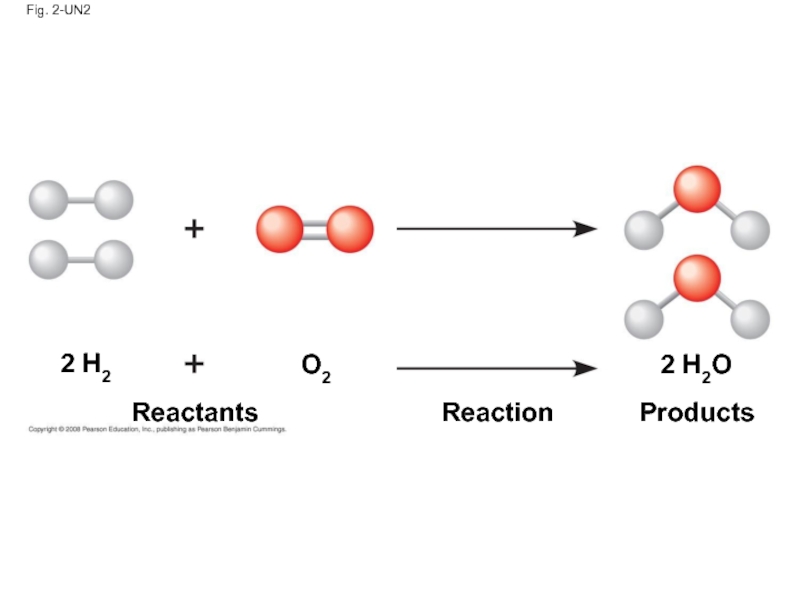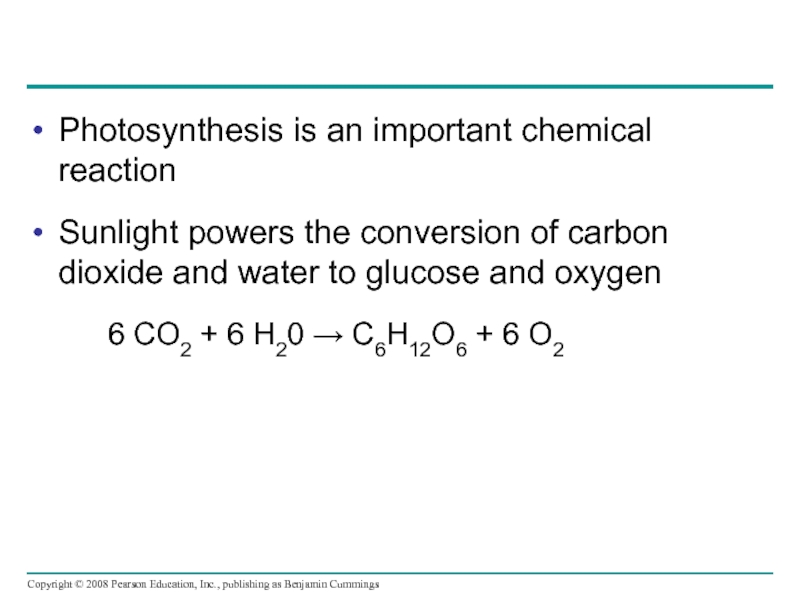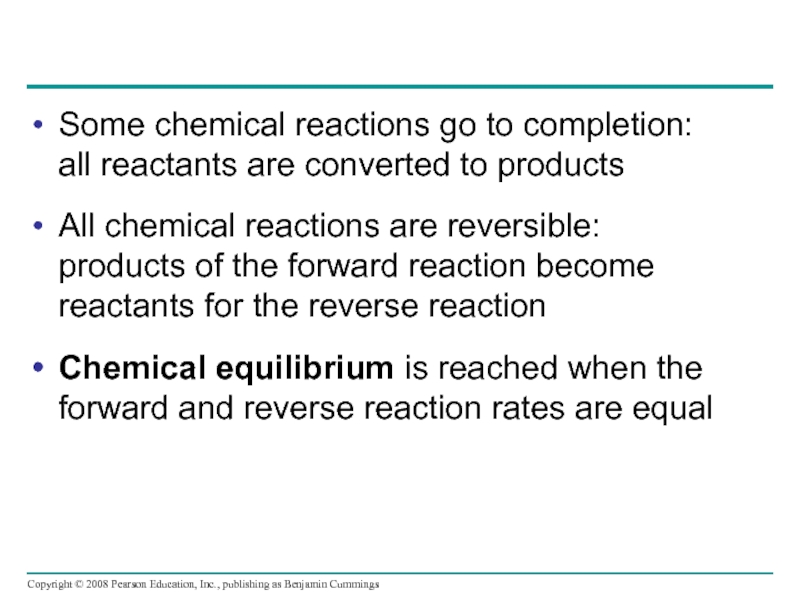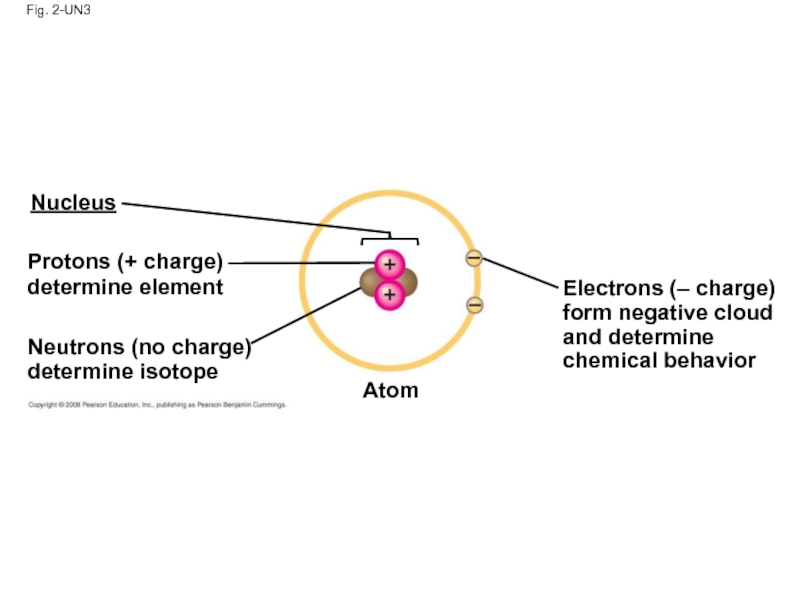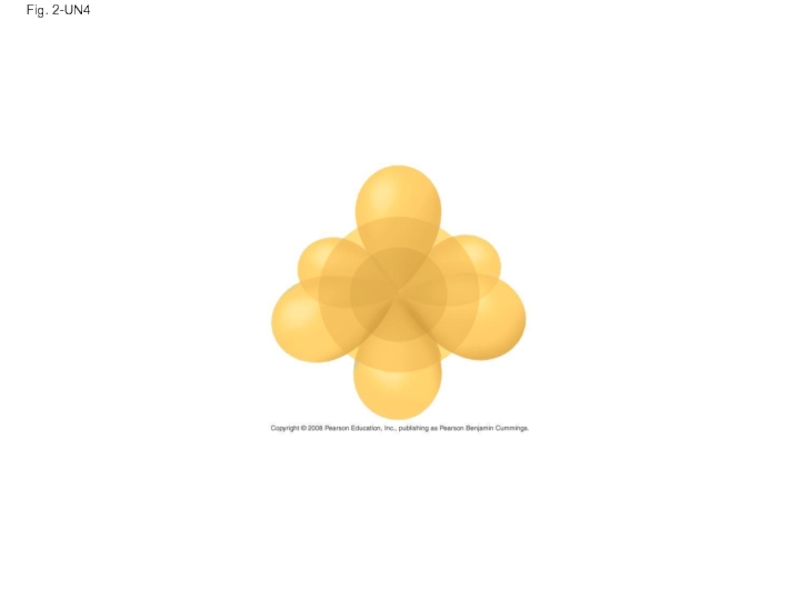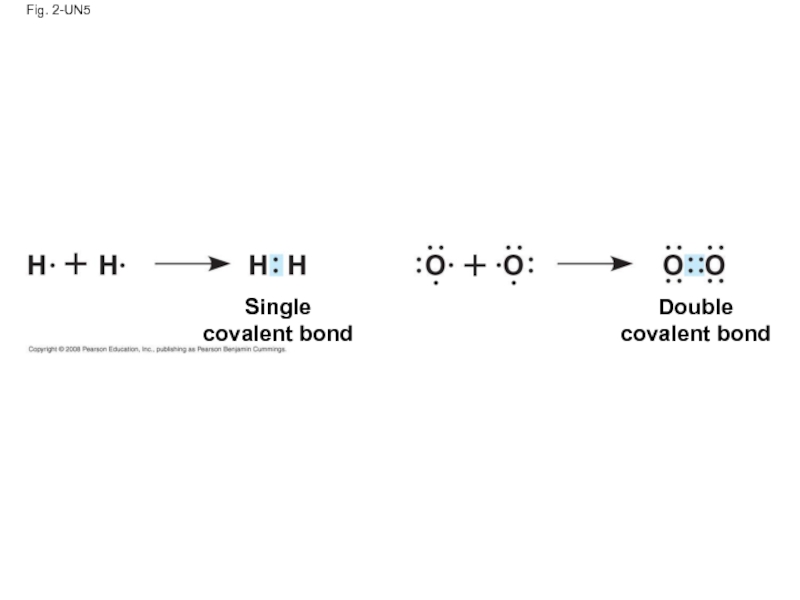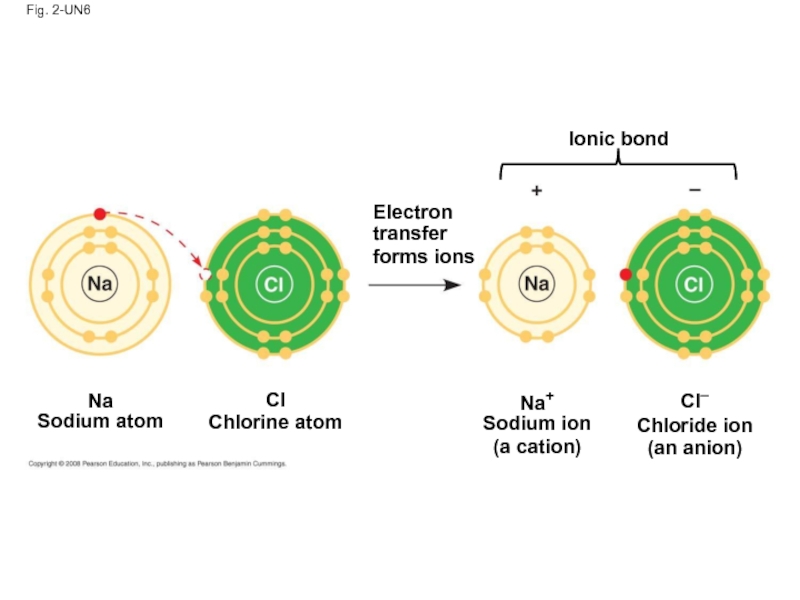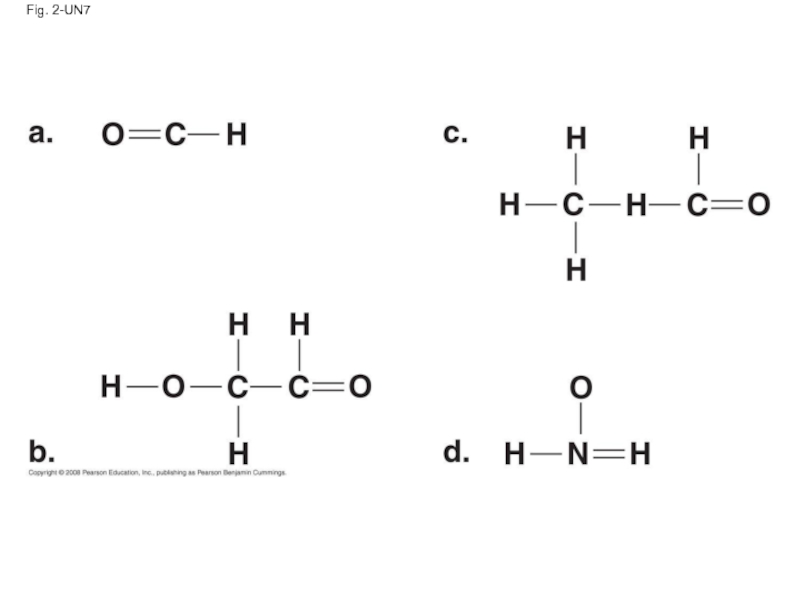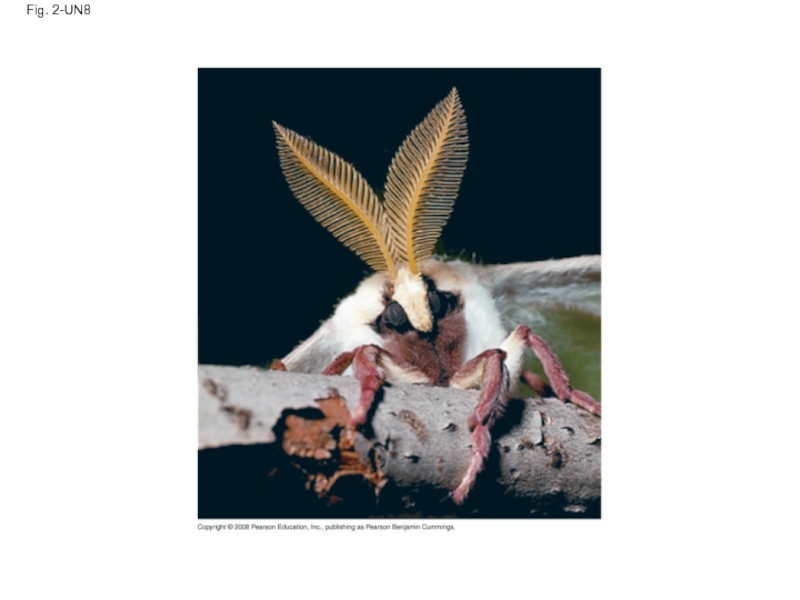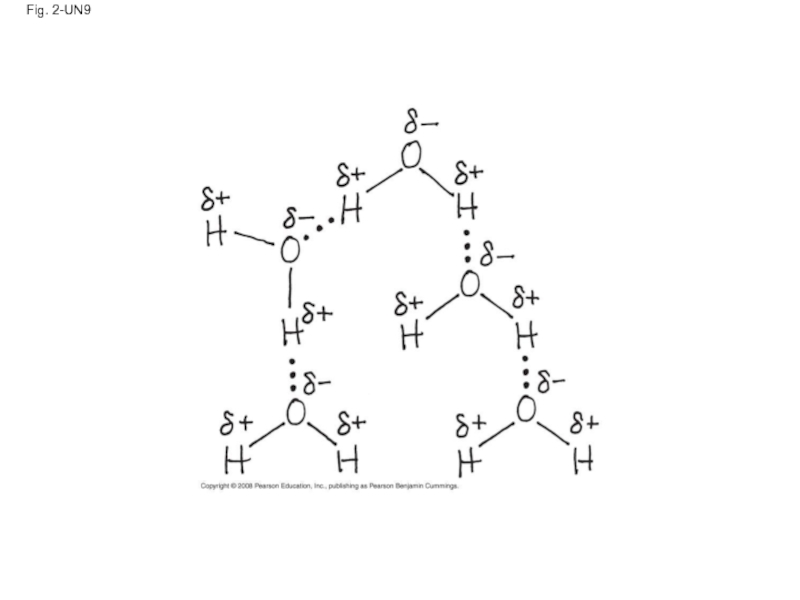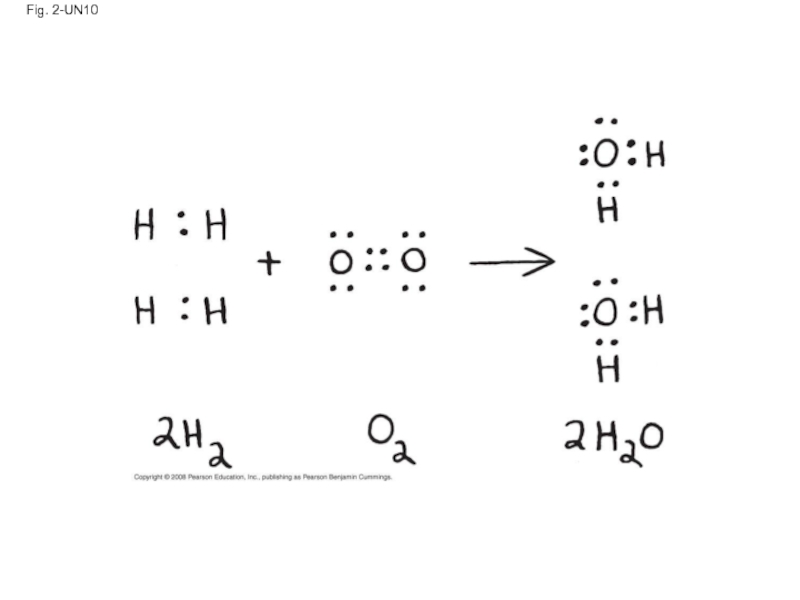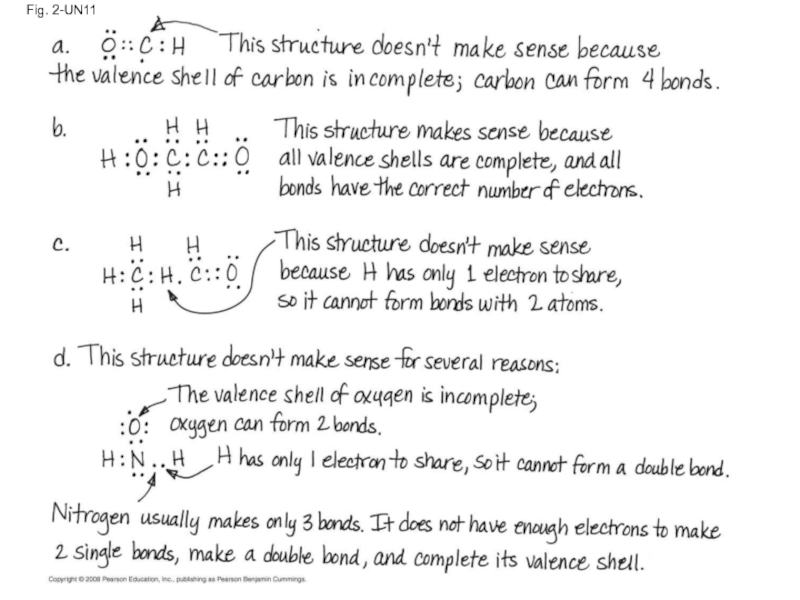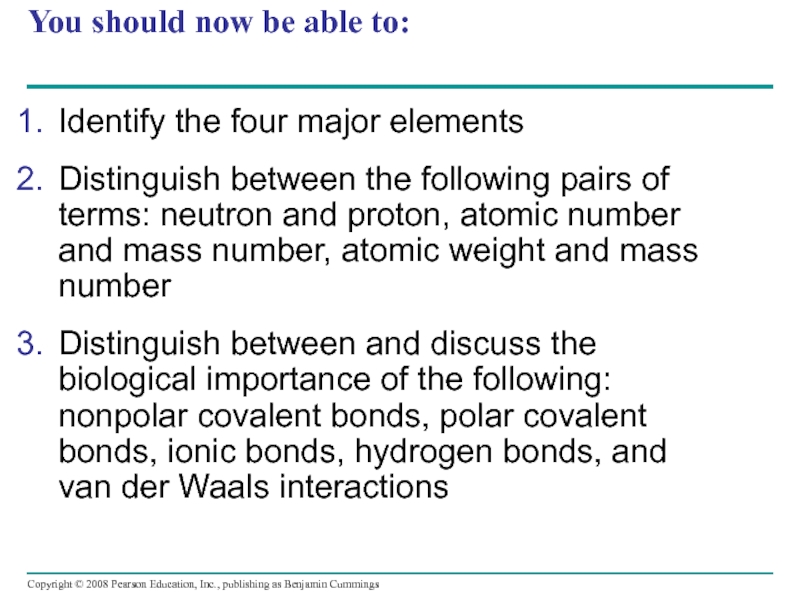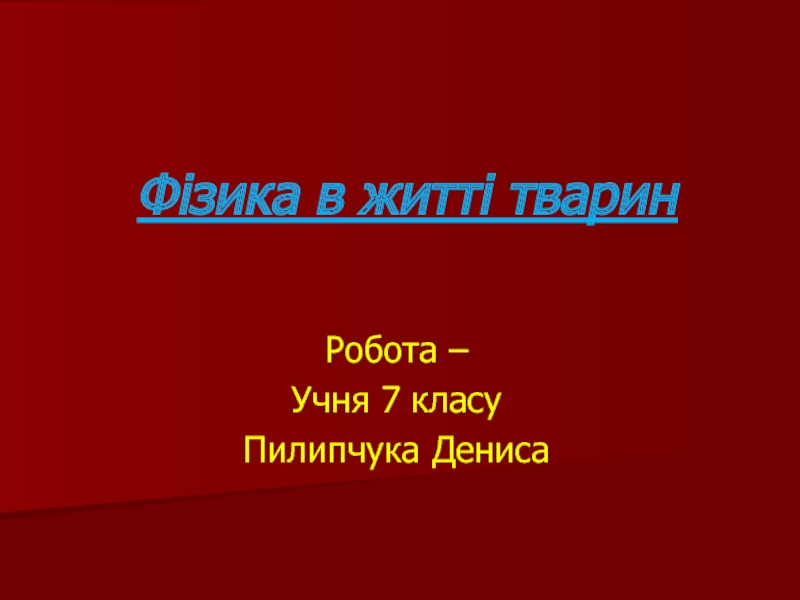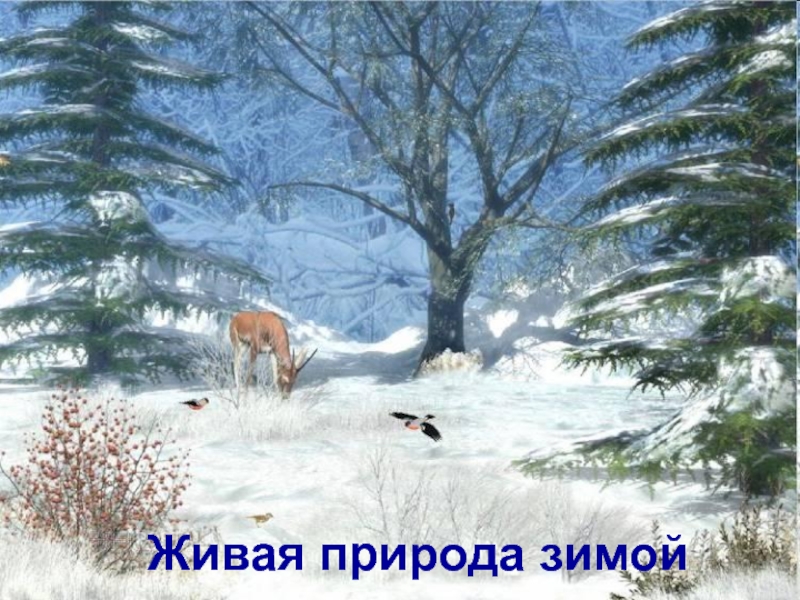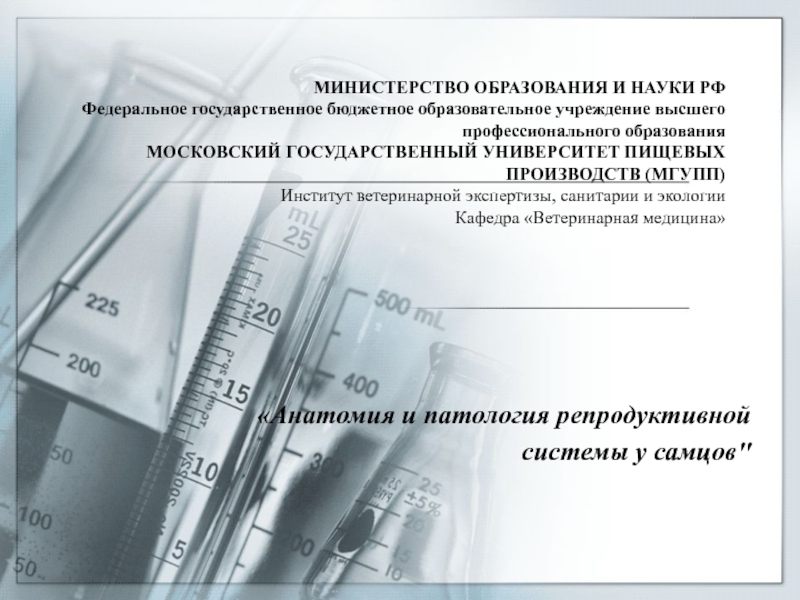- Главная
- Разное
- Дизайн
- Бизнес и предпринимательство
- Аналитика
- Образование
- Развлечения
- Красота и здоровье
- Финансы
- Государство
- Путешествия
- Спорт
- Недвижимость
- Армия
- Графика
- Культурология
- Еда и кулинария
- Лингвистика
- Английский язык
- Астрономия
- Алгебра
- Биология
- География
- Детские презентации
- Информатика
- История
- Литература
- Маркетинг
- Математика
- Медицина
- Менеджмент
- Музыка
- МХК
- Немецкий язык
- ОБЖ
- Обществознание
- Окружающий мир
- Педагогика
- Русский язык
- Технология
- Физика
- Философия
- Химия
- Шаблоны, картинки для презентаций
- Экология
- Экономика
- Юриспруденция
The Chemical Context of Life презентация
Содержание
- 1. The Chemical Context of Life
- 2. Overview: A Chemical Connection to Biology
- 3. Fig. 2-1
- 4. Fig. 2-2 EXPERIMENT RESULTS Cedrela
- 5. Fig. 2-2a Cedrela sapling Duroia tree Inside,
- 6. Fig. 2-2b Dead leaf tissue (cm2) after
- 7. Concept 2.1: Matter consists of chemical elements
- 8. Elements and Compounds Matter is made up
- 9. Fig. 2-3 Sodium Chlorine Sodium chloride
- 10. Fig. 2-3a Sodium
- 11. Fig. 2-3b Chlorine
- 12. Fig. 2-3c Sodium chloride
- 13. Essential Elements of Life About 25 of
- 14. Table 2-1
- 15. (a) Nitrogen deficiency Fig. 2-4 (b) Iodine deficiency
- 16. Fig. 2-4a (a) Nitrogen deficiency
- 17. Fig. 2-4b (b) Iodine deficiency
- 18. Concept 2.2: An element’s properties depend on
- 19. Subatomic Particles Atoms are composed of subatomic
- 20. Neutrons and protons form the atomic nucleus
- 21. Cloud of negative charge (2 electrons) Fig. 2-5 Nucleus Electrons (b) (a)
- 22. Atomic Number and Atomic Mass Atoms of
- 23. Isotopes All atoms of an element have
- 24. Some applications of radioactive isotopes in biological
- 25. Fig. 2-6
- 26. Fig. 2-6a Compounds including radioactive tracer
- 27. Fig. 2-6b TECHNIQUE The test tubes are placed in a scintillation counter. 3
- 28. Fig. 2-6c RESULTS Counts per minute
- 29. Fig. 2-7 Cancerous throat tissue
- 30. The Energy Levels of Electrons Energy is
- 31. Fig. 2-8 (a) A ball bouncing down
- 32. Electron Distribution and Chemical Properties The chemical
- 33. Fig. 2-9 Hydrogen 1H Lithium 3Li Beryllium
- 34. Valence electrons are those in the outermost
- 35. Electron Orbitals An orbital is the three-dimensional
- 36. Fig. 2-10-1 Electron-distribution diagram (a) Neon, with
- 37. Electron-distribution diagram (a) (b) Separate electron orbitals
- 38. Electron-distribution diagram (a) (b) Separate electron orbitals
- 39. Electron-distribution diagram (a) (b) Separate electron orbitals
- 40. Concept 2.3: The formation and function of
- 41. Covalent Bonds A covalent bond is the
- 42. Fig. 2-11 Hydrogen atoms (2 H) Hydrogen molecule (H2)
- 43. A molecule consists of two or more
- 44. The notation used to represent atoms and
- 45. Fig. 2-12 Name and Molecular Formula Electron-
- 46. Fig. 2-12a (a) Hydrogen (H2) Name and
- 47. Fig. 2-12b (b) Oxygen (O2) Name and
- 48. Fig. 2-12c (c) Water (H2O) Name and
- 49. Fig. 2-12d (d) Methane (CH4) Name and
- 50. Covalent bonds can form between atoms of
- 51. Electronegativity is an atom’s attraction for the
- 52. In a nonpolar covalent bond, the atoms
- 53. Fig. 2-13 δ – δ+ δ+ H H O H2O
- 54. Ionic Bonds Atoms sometimes strip electrons from
- 55. Fig. 2-14-1 Na Cl Na Sodium atom Chlorine atom Cl
- 56. Fig. 2-14-2 Na Cl Na Cl Na
- 57. A cation is a positively charged ion
- 58. Compounds formed by ionic bonds are called
- 59. Fig. 2-15 Na+ Cl–
- 60. Weak Chemical Bonds Most of the strongest
- 61. Hydrogen Bonds A hydrogen bond forms when
- 62. Fig. 2-16 δ − δ+ δ+ δ
- 63. Van der Waals Interactions If electrons are
- 64. Collectively, such interactions can be strong, as
- 65. Fig. 2-UN1
- 66. Molecular Shape and Function A molecule’s shape
- 67. Fig. 2-17 s orbital Three p orbitals
- 68. Fig. 2-17a s orbital z x y
- 69. Fig. 2-17b Space-filling Model Ball-and-stick Model Hybrid-orbital
- 70. Biological molecules recognize and interact with each
- 71. Fig. 2-18 (a) Structures of endorphin and
- 72. Fig. 2-18a Natural endorphin Morphine Key Carbon
- 73. Fig. 2-18b Natural endorphin Endorphin receptors Brain cell Binding to endorphin receptors Morphine (b)
- 74. Concept 2.4: Chemical reactions make and break
- 75. Fig. 2-UN2 Reactants Reaction Products 2 H2 O2 2 H2O
- 76. Photosynthesis is an important chemical reaction
- 77. Fig. 2-19
- 78. Some chemical reactions go to completion: all
- 79. Fig. 2-UN3 Nucleus Protons (+ charge)
- 80. Fig. 2-UN4
- 81. Fig. 2-UN5 Single covalent bond Double covalent bond
- 82. Fig. 2-UN6 Ionic bond Electron transfer
- 83. Fig. 2-UN7
- 84. Fig. 2-UN8
- 85. Fig. 2-UN9
- 86. Fig. 2-UN10
- 87. Fig. 2-UN11
- 88. You should now be able to: Identify
Слайд 2Overview: A Chemical Connection to Biology
Biology is a multidisciplinary science
Living organisms
One example is the use of formic acid by ants to maintain “devil’s gardens,” stands of Duroia trees
Copyright © 2008 Pearson Education, Inc., publishing as Benjamin Cummings
Слайд 4
Fig. 2-2
EXPERIMENT
RESULTS
Cedrela
sapling
Duroia
tree
Inside,
unprotected
Inside,
protected
Devil’s
garden
Outside,
unprotected
Outside,
protected
Insect
barrier
Dead leaf tissue (cm2)
after one day
Inside,
unprotected
Inside,
protected
Outside,
unprotected
Outside,
protected
Cedrela saplings, inside
0
4
8
12
16
Слайд 5Fig. 2-2a
Cedrela
sapling
Duroia
tree
Inside,
unprotected
Devil’s
garden
Inside,
protected
Insect
barrier
Outside,
unprotected
Outside,
protected
EXPERIMENT
Слайд 6Fig. 2-2b
Dead leaf tissue (cm2)
after one day
16
12
8
4
0
Inside,
unprotected
Inside,
protected
Outside,
unprotected
Outside,
protected
Cedrela saplings, inside and outside
RESULTS
Слайд 7Concept 2.1: Matter consists of chemical elements in pure form and
Organisms are composed of matter
Matter is anything that takes up space and has mass
Copyright © 2008 Pearson Education, Inc., publishing as Benjamin Cummings
Слайд 8Elements and Compounds
Matter is made up of elements
An element is
A compound is a substance consisting of two or more elements in a fixed ratio
A compound has characteristics different from those of its elements
Copyright © 2008 Pearson Education, Inc., publishing as Benjamin Cummings
Слайд 13Essential Elements of Life
About 25 of the 92 elements are essential
Carbon, hydrogen, oxygen, and nitrogen make up 96% of living matter
Most of the remaining 4% consists of calcium, phosphorus, potassium, and sulfur
Trace elements are those required by an organism in minute quantities
Copyright © 2008 Pearson Education, Inc., publishing as Benjamin Cummings
Слайд 18Concept 2.2: An element’s properties
depend on the structure of its atoms
Each
An atom is the smallest unit of matter that still retains the properties of an element
Copyright © 2008 Pearson Education, Inc., publishing as Benjamin Cummings
Слайд 19Subatomic Particles
Atoms are composed of subatomic particles
Relevant subatomic particles include:
Neutrons (no
Protons (positive charge)
Electrons (negative charge)
Copyright © 2008 Pearson Education, Inc., publishing as Benjamin Cummings
Слайд 20Neutrons and protons form the atomic nucleus
Electrons form a cloud around
Neutron mass and proton mass are almost identical and are measured in daltons
Copyright © 2008 Pearson Education, Inc., publishing as Benjamin Cummings
Слайд 22Atomic Number and Atomic Mass
Atoms of the various elements differ in
An element’s atomic number is the number of protons in its nucleus
An element’s mass number is the sum of protons plus neutrons in the nucleus
Atomic mass, the atom’s total mass, can be approximated by the mass number
Copyright © 2008 Pearson Education, Inc., publishing as Benjamin Cummings
Слайд 23Isotopes
All atoms of an element have the same number of protons
Isotopes are two atoms of an element that differ in number of neutrons
Radioactive isotopes decay spontaneously, giving off particles and energy
Copyright © 2008 Pearson Education, Inc., publishing as Benjamin Cummings
Слайд 24Some applications of radioactive isotopes in biological research are:
Dating fossils
Tracing atoms
Diagnosing medical disorders
Copyright © 2008 Pearson Education, Inc., publishing as Benjamin Cummings
Слайд 25
Fig. 2-6
TECHNIQUE
RESULTS
Compounds including
radioactive tracer
(bright blue)
Incubators
1
2
3
4
5
6
7
8
9
10°C
15°C
20°C
25°C
30°C
35°C
40°C
45°C
50°C
1
2
3
Human cells
Human
cells are
incubated
with compounds used to
make DNA.
labeled with 3H.
The cells are
placed in test
tubes; their DNA is
isolated; and
unused labeled
compounds are
removed.
DNA (old and new)
The test tubes are placed in a scintillation counter.
Counts per minute
(× 1,000)
Optimum
temperature
for DNA
synthesis
Temperature (ºC)
0
10
10
20
20
30
30
40
50
Слайд 26
Fig. 2-6a
Compounds including
radioactive tracer
(bright blue)
Human cells
Incubators
1
2
3
4
5
6
7
8
9
50ºC
45ºC
40ºC
25ºC
30ºC
35ºC
15ºC
20ºC
10ºC
Human
cells are
incubated
with compounds used to
make DNA.
labeled with 3H.
1
2
The cells are
placed in test
tubes; their DNA is
isolated; and
unused labeled
compounds are
removed.
DNA (old and new)
TECHNIQUE
Слайд 28
Fig. 2-6c
RESULTS
Counts per minute
(× 1,000)
0
10
20
30
40
50
10
20
30
Temperature (ºC)
Optimum
temperature
for DNA
synthesis
Слайд 30The Energy Levels of Electrons
Energy is the capacity to cause change
Potential
The electrons of an atom differ in their amounts of potential energy
An electron’s state of potential energy is called its energy level, or electron shell
Copyright © 2008 Pearson Education, Inc., publishing as Benjamin Cummings
Слайд 31Fig. 2-8
(a) A ball bouncing down a flight
of
for energy levels of electrons
Third shell (highest energy
level)
Second shell (higher
energy level)
Energy
absorbed
First shell (lowest energy
level)
Atomic
nucleus
(b)
Energy
lost
Слайд 32Electron Distribution and Chemical Properties
The chemical behavior of an atom is
The periodic table of the elements shows the electron distribution for each element
Copyright © 2008 Pearson Education, Inc., publishing as Benjamin Cummings
Слайд 33Fig. 2-9
Hydrogen
1H
Lithium
3Li
Beryllium
4Be
Boron
5B
Carbon
6C
Nitrogen
7N
Oxygen
8O
Fluorine
9F
Neon
10Ne
Helium
2He
Atomic number
Element symbol
Electron-
distribution
diagram
Atomic mass
2
He
4.00
First
shell
Second
shell
Third
shell
Sodium
11Na
Magnesium
12Mg
Aluminum
13Al
Silicon
14Si
Phosphorus
15P
Sulfur
16S
Chlorine
17Cl
Argon
18Ar
Слайд 34Valence electrons are those in the outermost shell, or valence shell
The
Elements with a full valence shell are chemically inert
Copyright © 2008 Pearson Education, Inc., publishing as Benjamin Cummings
Слайд 35Electron Orbitals
An orbital is the three-dimensional space where an electron is
Each electron shell consists of a specific number of orbitals
Copyright © 2008 Pearson Education, Inc., publishing as Benjamin Cummings
Слайд 36Fig. 2-10-1
Electron-distribution
diagram
(a)
Neon, with two filled shells (10 electrons)
First shell
Second shell
Слайд 37Electron-distribution
diagram
(a)
(b)
Separate electron
orbitals
Neon, with two filled shells (10 electrons)
First shell
Second shell
1s orbital
Fig.
Слайд 38Electron-distribution
diagram
(a)
(b)
Separate electron
orbitals
Neon, with two filled shells (10 electrons)
First shell
Second shell
1s orbital
2s
Three 2p orbitals
x
y
z
Fig. 2-10-3
Слайд 39Electron-distribution
diagram
(a)
(b)
Separate electron
orbitals
Neon, with two filled shells (10 electrons)
First shell
Second shell
1s orbital
2s
Three 2p orbitals
(c)
Superimposed electron
orbitals
1s, 2s, and 2p orbitals
x
y
z
Fig. 2-10-4
Слайд 40Concept 2.3: The formation and function of molecules depend on chemical
Atoms with incomplete valence shells can share or transfer valence electrons with certain other atoms
These interactions usually result in atoms staying close together, held by attractions called chemical bonds
Copyright © 2008 Pearson Education, Inc., publishing as Benjamin Cummings
Слайд 41Covalent Bonds
A covalent bond is the sharing of a pair of
In a covalent bond, the shared electrons count as part of each atom’s valence shell
Copyright © 2008 Pearson Education, Inc., publishing as Benjamin Cummings
Слайд 43A molecule consists of two or more atoms held together by
A single covalent bond, or single bond, is the sharing of one pair of valence electrons
A double covalent bond, or double bond, is the sharing of two pairs of valence electrons
Copyright © 2008 Pearson Education, Inc., publishing as Benjamin Cummings
Слайд 44The notation used to represent atoms and bonding is called a
For example, H–H
This can be abbreviated further with a molecular formula
For example, H2
Animation: Covalent Bonds
Copyright © 2008 Pearson Education, Inc., publishing as Benjamin Cummings
Слайд 45Fig. 2-12
Name and
Molecular
Formula
Electron-
distribution
Diagram
Lewis Dot
Structure and
Structural
Formula
Space-
filling
Model
(a) Hydrogen (H2)
(b) Oxygen (O2)
(c) Water
(d) Methane (CH4)
Слайд 46Fig. 2-12a
(a) Hydrogen (H2)
Name and
Molecular
Formula
Electron-
distribution
Diagram
Lewis Dot
Structure and
Structural
Formula
Space-
filling
Model
Слайд 47Fig. 2-12b
(b) Oxygen (O2)
Name and
Molecular
Formula
Electron-
distribution
Diagram
Lewis Dot
Structure and
Structural
Formula
Space-
filling
Model
Слайд 48Fig. 2-12c
(c) Water (H2O)
Name and
Molecular
Formula
Electron-
distribution
Diagram
Lewis Dot
Structure and
Structural
Formula
Space-
filling
Model
Слайд 49Fig. 2-12d
(d) Methane (CH4)
Name and
Molecular
Formula
Electron-
distribution
Diagram
Lewis Dot
Structure and
Structural
Formula
Space-
filling
Model
Слайд 50Covalent bonds can form between atoms of the same element or
A compound is a combination of two or more different elements
Bonding capacity is called the atom’s valence
Copyright © 2008 Pearson Education, Inc., publishing as Benjamin Cummings
Слайд 51Electronegativity is an atom’s attraction for the electrons in a covalent
The more electronegative an atom, the more strongly it pulls shared electrons toward itself
Copyright © 2008 Pearson Education, Inc., publishing as Benjamin Cummings
Слайд 52In a nonpolar covalent bond, the atoms share the electron equally
In
Unequal sharing of electrons causes a partial positive or negative charge for each atom or molecule
Copyright © 2008 Pearson Education, Inc., publishing as Benjamin Cummings
Слайд 54Ionic Bonds
Atoms sometimes strip electrons from their bonding partners
An example is
After the transfer of an electron, both atoms have charges
A charged atom (or molecule) is called an ion
Copyright © 2008 Pearson Education, Inc., publishing as Benjamin Cummings
Слайд 56Fig. 2-14-2
Na
Cl
Na
Cl
Na
Sodium atom
Chlorine atom
Cl
Na+
Sodium ion
(a cation)
Cl–
Chloride ion
(an anion)
Sodium chloride (NaCl)
Слайд 57A cation is a positively charged ion
An anion is a negatively
An ionic bond is an attraction between an anion and a cation
Animation: Ionic Bonds
Copyright © 2008 Pearson Education, Inc., publishing as Benjamin Cummings
Слайд 58Compounds formed by ionic bonds are called ionic compounds, or salts
Salts,
Copyright © 2008 Pearson Education, Inc., publishing as Benjamin Cummings
Слайд 60Weak Chemical Bonds
Most of the strongest bonds in organisms are covalent
Weak chemical bonds, such as ionic bonds and hydrogen bonds, are also important
Weak chemical bonds reinforce shapes of large molecules and help molecules adhere to each other
Copyright © 2008 Pearson Education, Inc., publishing as Benjamin Cummings
Слайд 61Hydrogen Bonds
A hydrogen bond forms when a hydrogen atom covalently bonded
In living cells, the electronegative partners are usually oxygen or nitrogen atoms
Copyright © 2008 Pearson Education, Inc., publishing as Benjamin Cummings
Слайд 63Van der Waals Interactions
If electrons are distributed asymmetrically in molecules or
Van der Waals interactions are attractions between molecules that are close together as a result of these charges
Copyright © 2008 Pearson Education, Inc., publishing as Benjamin Cummings
Слайд 64Collectively, such interactions can be strong, as between molecules of a
Copyright © 2008 Pearson Education, Inc., publishing as Benjamin Cummings
Слайд 66Molecular Shape and Function
A molecule’s shape is usually very important to
A molecule’s shape is determined by the positions of its atoms’ valence orbitals
In a covalent bond, the s and p orbitals may hybridize, creating specific molecular shapes
Copyright © 2008 Pearson Education, Inc., publishing as Benjamin Cummings
Слайд 67Fig. 2-17
s orbital
Three p
orbitals
(a) Hybridization of orbitals
Tetrahedron
Four hybrid orbitals
Space-filling
Model
Ball-and-stick
Model
Hybrid-orbital Model
(with ball-and-stick
model
Unbonded
electron
pair
104.5º
Water (H2O)
Methane (CH4)
(b) Molecular-shape models
z
x
y
Слайд 68Fig. 2-17a
s orbital
z
x
y
Three p
orbitals
Hybridization of orbitals
Four hybrid orbitals
Tetrahedron
(a)
Слайд 69Fig. 2-17b
Space-filling
Model
Ball-and-stick
Model
Hybrid-orbital Model
(with ball-and-stick
model superimposed)
Unbonded
electron
pair
104.5º
Water (H2O)
Methane (CH4)
Molecular-shape models
(b)
Слайд 70Biological molecules recognize and interact with each other with a specificity
Molecules with similar shapes can have similar biological effects
Copyright © 2008 Pearson Education, Inc., publishing as Benjamin Cummings
Слайд 71Fig. 2-18
(a) Structures of endorphin and morphine
(b) Binding to endorphin receptors
Natural
endorphin
Endorphin
receptors
Morphine
Brain
Morphine
Natural endorphin
Key
Carbon
Hydrogen
Nitrogen
Sulfur
Oxygen
Слайд 72Fig. 2-18a
Natural endorphin
Morphine
Key
Carbon
Hydrogen
Nitrogen
Sulfur
Oxygen
Structures of endorphin and morphine
(a)
Слайд 73Fig. 2-18b
Natural
endorphin
Endorphin
receptors
Brain cell
Binding to endorphin receptors
Morphine
(b)
Слайд 74Concept 2.4: Chemical reactions make and break chemical bonds
Chemical reactions are
The starting molecules of a chemical reaction are called reactants
The final molecules of a chemical reaction are called products
Copyright © 2008 Pearson Education, Inc., publishing as Benjamin Cummings
Слайд 76Photosynthesis is an important chemical reaction
Sunlight powers the conversion of
6 CO2 + 6 H20 → C6H12O6 + 6 O2
Copyright © 2008 Pearson Education, Inc., publishing as Benjamin Cummings
Слайд 78Some chemical reactions go to completion: all reactants are converted to
All chemical reactions are reversible: products of the forward reaction become reactants for the reverse reaction
Chemical equilibrium is reached when the forward and reverse reaction rates are equal
Copyright © 2008 Pearson Education, Inc., publishing as Benjamin Cummings
Слайд 79Fig. 2-UN3
Nucleus
Protons (+ charge)
determine element
Neutrons (no charge)
determine isotope
Atom
Electrons (– charge) form
and determine
chemical behavior
Слайд 82Fig. 2-UN6
Ionic bond
Electron
transfer
forms ions
Na
Sodium atom
Cl
Chlorine atom
Na+
Sodium ion
(a cation)
Cl–
Chloride ion
(an anion)
Слайд 88You should now be able to:
Identify the four major elements
Distinguish between
Distinguish between and discuss the biological importance of the following: nonpolar covalent bonds, polar covalent bonds, ionic bonds, hydrogen bonds, and van der Waals interactions
Copyright © 2008 Pearson Education, Inc., publishing as Benjamin Cummings
